
Original Link: https://www.anandtech.com/show/9485/intel-skylake-z170-motherboards-asrock-asus-gigabyte-msi-ecs-evga-supermicro
Intel Skylake Z170 Motherboards: A Quick Look at 55+ New Products
by Ian Cutress on August 5, 2015 7:59 AM EST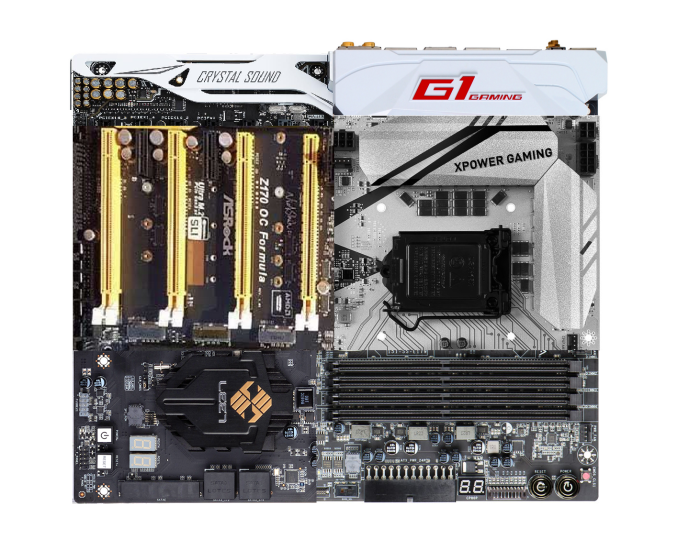
Along with the launch of the two Skylake-K processors today, we also have a raft of new motherboards to go with them. The Skylake processors use the LGA 1151 socket (which is new) combined with the Z170 chipset, meaning every motherboard manufacturer has been developing and putting together a whole stack of products to meet different price points and demand. The Z170 chipset itself represents a large jump in terms of IO design, driven by the growing need for diversification and utility on modern platforms.
In this piece we are going to look at both the Z170 chipset itself, the benefits that come along with using Z170, and then the motherboards that are set to launch equipped with it. Intel’s details about the chipset have been some of the briefest we have experienced in any recent Intel launch, although we have been able to piece together various aspects of the design from a number of sources. We have been promised more detail about the system during the Intel Developer Forum in mid-August, to which both Ryan and I will be attending and asking plenty of questions. A lot of the detail about Z170 in this piece is mirrored in our main Skylake review as well.
For the motherboard information itself, this is the culmination of requests to the manufacturers who have mostly provided both pictures and specifications on the bulk of their ranges. Due to this launch being a couple of weeks earlier than the motherboard manufacturers expected (even from Computex), not everything is 100% ready to go today - as a result we are still awaiting MSRP details for a lot of the products, but they should be on the shelves if not today then in the next couple of weeks.
The Z170 Chipset
This is the new diagram that yields a good amount of Z170 information:
So to clear up any pre-release ‘leaks’ or guesses as to the configuration of the platform, we have sixteen PCIe 3.0 lanes coming from the processor which can be split into an x16, x8/x8 or x8/x4/x4 configuration. Motherboards that have x8/x4/x4 will only support dual-SLI in x8/x8 mode when the final x4 is unpopulated due to limitations placed on SLI by NVIDIA. The processor will support both DDR4 and DDR3L, whereby DDR3L is the 1.35 volt standard of DDR3 – no regular 1.5 volt DDR3 kits will be expected to work due to the high voltage. Motherboard manufacturers can choose to support DDR4, DDR3L, or a mixture of these two technologies. That being said we see DDR3L being used only on low-to-mid range products with the emphasis being placed on DDR4.
The integrated graphics for the CPU is called Intel HD Graphics 530, which deviates from previous version of Intel’s naming scheme. Intel states that its 6th generation processor (Skylake) integrated graphics will use this new 3-digit naming scheme to reduce confusion. The HD Graphics 530, on both the i7-6700K and i7-6600K processors, is Intel’s GT2 variant of the Generation 9 graphics architecture with OpenCL 2.0 support and 24 Execution Units (EUs) running at a peak of 1150 MHz. Please refer to the main CPU article for more information.
DMI 3.0 and 26 High Speed IO Lanes (20x PCIe 3.0)
The processor is connected to the chipset by the four-lane DMI 3.0 interface. The DMI 3.0 protocol is an upgrade over the previous generation which used DMI 2.0 – this upgrade boosts the speed from 5.0 GT/s to 8.0 GT/s, but requires the motherboard traces between the CPU and chipset to be closer (7 inches rather than 8 inches) in order to maintain signal speed and integrity. This also allows one of the biggest upgrades to the system, chipset connectivity.
The Z170 chipset features a massive Flex-IO hub. In the previous Z97 chipset, there are a total of 18 Flex-IO ports that can flip between PCIe lanes, USB 3.0 ports or SATA 6 Gbps ports. For Z170, this moves up to 26 and can be used in a variety of configurations:
For each of the 26 high-speed input/output ports (HSIO, or the Flex-IO), there can be a variety of combinations available. Each manufacturer can run down the list and apply what they may or may not need – some of the extra functionality (e.g. GbE / Ethernet) will require extra controllers. By default, the first six HSIO ports are USB 3.0, with two able for super-speed interconnect where warranted. The next 20 HSIO ports are split into groups of four PCIe 3.0 lanes, such that each group is part of one of the internal controllers on the chipset.
The HSIO allows a smörgåsbord of options, a variable pick-and-mix. The last three sets of four are also labelled Intel PCIe storage device – this is important because the new Z170 chipset now supports more PCIe devices as part of its Rapid Storage Technology (RST). This allows M.2 and SATA Express devices to be in RAID arrays as long as they are connected through these HSIO lanes. The new version of RST is given the number 14, and RST 14 supports three PCIe devices at one time. As a result, we will probably see motherboards with three M.2 slots all in PCIe 3.0 x4 mode, available for RAID. With that being said, we lose any extra SATA ports and have to rely on controllers elsewhere to do everything else. It is worth noting that the constant SATA ports on Z170 support DEVSLP modes.
Companion Controllers For Z170 - Alpine Ridge, ASM1142, I219 for Network
There will be several companion controllers to look out for on the Z170 motherboards. The most common we expect to see is the ASMedia ASM1142 controller, which is used to provide USB 3.1 Gen 2 ports. This controller uses two PCIe lanes to provide up to two USB 3.1 ports. This controller uses two PCIe lanes to provide up to two USB 3.1 ports, typically on the rear panel. We have reviewed this implementation on previous chipsets here and here. Typically the presence of the ASM1142 controller will increase the price of the motherboard by a small number of dollars – I suspect motherboard manufacturers are buying this in bulk for a number of future devices.
The other way to place USB 3.1 on the motherboard is through Intel’s Alpine Ridge Thunderbolt controller.
Using four PCIe lanes (and the DisplayPort lanes), the Alpine Ridge controller can support USB 3.1 Gen 2, Thunderbolt 3, and DisplayPort, and all over the USB Type-C connector as necessary. Alpine Ridge can also act as a LS-Pcon and convert the DP signal into a HDMI 2.0 signal with HDCP 2.2 support.
As mentioned in GIGABYTE’s details above, the Alpine Ridge solution will add around $10 to the cost of the board, which probably translates near $20 to the end-user cost. It is our understanding that the increased speed of the Z170 launch means that there has been supply issues with Alpine Ridge controllers and that there will be more products coming out next month (September) from various manufacturers that will use the controller.
The final controller we will see a lot of is Intel’s own gigabit Ethernet family, the I219 controller, named Jacksonville.
As mentioned above, the I219-V is aimed at consumers while the I219-LM is for corporate/business although I imagine we will see a mix of both on a number of motherboards, especially at the high end. The I219 series comes with better power management, so when Skylake comes to more power-conscious platforms we should see some uptake there.
I will also add that Realtek Ethernet solutions will also be seen on Z170 motherboards, typically as the cost effective solution. Back at Computex we also saw Realtek’s gaming network solution, the Dragon, with the codename 8118AS on some ECS models. Opposite that will be the Rivet Network’s Killer Ethernet controllers, specifically the E2400, as a gaming optimized model along with the marketing points that go along with it.
CPU Power Arrangements
Moving on to power arrangements on Z170 motherboards, with Skylake the situation changes as compared to Haswell. Prior to Haswell, voltage regulation was performed by the motherboard and the right voltages were then put into the processor. This was deemed inefficient for power consumption, and for the Haswell/Broadwell processors Intel decided to create a fully integrated voltage regulator (FIVR) in order to reduce motherboard cost and reduce power consumption. This had an unintended side-effect – while it was more efficient (good for mobile platforms), it also acted as a source of heat generation inside the CPU with high frequencies. As a result, overclocking was limited by temperatures and the quality of the FIVR led to a large variation in results. For Skylake on the desktop, the voltage regulation is moved back into the hands of the motherboard manufacturers. This should allow for cooler processors depending on how the silicon works, but it will result in slightly more expensive motherboards.
A slight indication of this will be that some motherboards will go back to having a large amount of multiplexed phases on the motherboard, and it will allow some manufacturers to use this as a differentiating point, although the usefulness of such a design is sometimes questionable.
Audio and Video Support
There are some more esoteric properties of the Z170 chipset worth mentioning – the ball pitch of the grid array attaching the chipset to the motherboard has decreased from Z97, from 0.65mm to 0.50mm. The chipset now supports DMIC, digital microphone direct attach, allowing microphones to be plugged directly into the chipset without the need for an external codec. This has benefits in power saving (no need to activate an external codec) and potential cost savings (don’t buy an audio codec), specifically for features such as Wake-On-Voice.
The analog (VGA) video connector has now been completely removed from the CPU/chipset combination, meaning that any VGA/D-Sub video connection has to be provided via an active digital/analog converter chip. This has been a long time coming, and is part of a previous committment made by Intel several years ago to remove VGA by 2015. Removing analog display functionality will mean added cost for legacy support in order to drive analog displays. Arguably this doesn’t mean much for Z170 as the high end platform is typically used with a discrete graphics card that has HDMI or DisplayPort, but we will see motherboards with VGA equipped in order to satisfy some regional markets with specific requirements.
HDMI 2.0 is not supported by default, and only the following resolutions are possible on the three digital display controllers:
A DP to HDMI 2.0 converter, specifically an LS-Pcon, is required to do the adjustments. We suspect that there will not be many takers buying a controller to do this, given the capabilities and added benefits of the Alpine Ridge controller.
Chipset Power and Installing Windows 7
The power into the chipset is now provided by a single power rail, rather than separate core/suspend rails, which should simplify design. Some other restrictions are also placed on PCIe routing signals, bringing the maximum length down from 10-inches to 9-inches, and also M.2 routing in PCIe 3.0 mode is also reduced. We are also informed that PCIe flex cable/daughter card arrangements are limited to PCIe 2.0 mode.
One big shock will be for Windows 7 users. By default, the Z170 chipset and BIOS will not support full USB 2.0 Enhanced Host Controller (EHCI) mode. This means that for a number of circumstances, USB devices will not work unless an XHCI environment in play.
In our testing, this means that in order to install Windows 7 you need to do the following:
- Navigate to BIOS
- Enable ‘Windows 7 Installation’ or ‘EHCI mode’, Save and Exit.
- Have your Windows 7 image on an optical disk. USB sticks will not work!
- Install the OS as normal via the optical media. Install OS drivers/USB 3.0 drivers.
- Disable the BIOS option.
This is done for a couple of reasons. Firstly, it helps reduce the size of the BIOS for more customization. It also aids moving users to AHCI capable operating system installations. For everyone else, it is a bit of a headache. As far as we can tell, almost all motherboard manufacturers (at least the Tier-1s) will have this option in the BIOS to enable Windows 7 installation.
What To Expect
Z170 and the Skylake platform make a large number of fundamental changes when it comes to functionality, design and cost. By opening up the chipset HSIO/Flex-IO ports to twenty PCIe 3.0 lanes, even with specific limitations on a number of them, we should avoid the situation we had in Z97 where users might have three features but only two of them would work at once. Now we have enough lanes to enable them all.
From a personal perspective, this allows for several esoteric designs. Because the chipset is limited as a maximum to PCIe 3.0 x4 per port, imagine the system having several quad-lane SATA controllers, each giving out eight SATA 6 Gbps ports. Combining those with port multipliers might allow each controller to double its ports. That means five controllers, each with eight SATA 6 Gbps ports, then doubled with port multipliers. A motherboard with 80 SATA ports, anyone?
Perhaps I jest, but the limitation of what can be done now revolves around the imagination of the motherboard manufacturers and how much of a market is out there. They are all listening to what the customers want, and the more you want to buy the more of a say you can have. Leave interesting suggestions and combinations below.
For users waiting on other chipsets than Z170, such as H170, Q150, B150 and H110 will have to wait until later in the year when Intel releases them. At this time, only Z170 is being launched.
A Small Bit of Confusing Terminology: USB 3.1 Gen 1 or Gen 2?
Finally, to throw a bit of a curveball in here, you will see motherboard manufacturers refer to USB 3.1 in different ways. Specifically, some manufacturers will refer to the new USB 3.1 ports as ‘USB 3.1 Gen 2’, giving 10 Gbps bandwidth, and the older USB 3.0 ports as ‘USB 3.1 Gen 1’ for 5 Gbps bandwidth. This just makes everything confusing for the buyer, and we aren't fond of these shenanigans.
| USB Standards | ||
| Standard | Max Speed | Alt. Name |
| USB 2.0 | 480Mbps | High Speed |
| USB 3.0 | 5Gbps | SuperSpeed |
| USB 3.1 Gen 1 | 5Gbps | SuperSpeed |
| USB 3.1 Gen 2 | 10Gbps | SuperSpeed+ |
For the sake of simplicity, going forward we will be doing the following:
USB 3.1 Gen 1 running at 5 Gbps will be referred to as USB 3.0
USB 3.1 Gen 2 running at 10 Gbps will be referred to as to USB 3.1
Although both Apple and MSI are using the Gen1/Gen2 terminology, we will keep it simple.
This Article
Now we’ve gone through the platform in quick detail, here are the motherboards. Some of them we have complete information on, others have pictures snapped at various events prior to launch, and some are still to be finalised. At last count I have heard of at least 65 different Z170 models coming to market, differentiated by functionality, looks, software and implementation. In no particular order, here we go…
ASRock Z170: OC Formula and Gaming ATX
The motherboard lines from ASRock fall into three categories: overclocking (OC Formula), mainstream channel (Extreme, Pro) and gaming (Fatal1ty Gaming). ASRock is also historically a motherboard manufacturer that likes to do things a little bit differently, trying out new combinations and designs regardless of widespread appeal. For the Z170 launch there are no serious surprises to begin with (like an Extreme11 with onboard LSI controller), but there are a few smaller form factor products in the mix.
Motherboards with a + in the name will come with a bundled USB 3.1 front panel adaptor suited for USB Type-C. This connector uses a SATA Express port and a USB header to give a panel that uses the ASMedia ASM1142 controller to a USB 3.1-C and USB 3.1-A. To be honest, this is quite clever – SATA Express as a standard is practically dead as no products using it have ever been released. As a result, ASRock has repurposed it for USB 3.1 use, allowing USB 3.1 ports on the front of the PC – a nice idea.
ASRock Z170 OC Formula
The sole overclocking motherboard to begin with will be the OC Formula. Typically ASRock also launches a microATX version of this, but at this time we believe if one is coming, it may be coming out at a later date.
The OC Formula will be an 8-layer motherboard sporting sixteen power phases with four DDR4 memory slots supporting up to DDR4-3600 when overclocked. The motherboard looks set up for four-way graphics, although there is an apparent lack of a PLX chip. This suggests that the PCIe lane allocation from the GPU is x16 for single graphics and x8/x8 for dual graphics. The other two full-length PCIe slots, even from this image, look to have fewer electrical pins in them for PCIe 3.0 x4 connections from the chipset.
In the middle of the PCIe lanes are three M.2 slots, and they all support PCIe 3.0 x4 from the chipset and it would seem to suggest that these are RST capable. If that is the case, that gives 12 lanes to M.2 and 8 lanes to PCIe slots, totalling up the 20 PCIe lanes of the chipset before we get to USB 3.1 controllers, networking support or the two extra PCIe 3.0 x1 slots onboard. This means that there is probably some limitation on the combination, or that one of the PCIe 3.0 x4 slots actually comes from the CPU, giving an x8/x4/x4 combination. My specification sheet lists quad-SLI support, although some manufacturers tend to use that to mean dual-GPU graphics cards such as the GTX 690 in two slots. 3-way CFX is also supported, although if these are PCIe 3.0 x4 slots from the chipset, I’m sure they can be used in CrossFire mode anyway.
Audio is from an enhanced Realtek ALC1150 solution, giving the usual array of EMI shield, PCB separation, enhanced filter caps and others. Networking is from the Intel I219V, with a mini-PCIe slot above the first PCIe x16 slot for a WiFi card if needed. VGA output on this board is provided only by HDMI 1.4b and DP 1.2, with the focus of this board on discrete graphics. There’s a USB port sticking out on the right hand side next to two USB 3.0 headers and another few ports on the rear. There is an ASMedia ASM1142 in play, giving a USB 3.1-A and USB 3.1-C on the rear panel. Storage is given by the aforementioned three M.2 slots, ten SATA 6 Gbps ports and three SATA Express capable arrangements. It will be interesting to see the block diagram when this board hits the shelves.
ASRock Z170 Gaming K6+ ($200) / Z170 Gaming K6 ($185)
The Gaming K6 and K6+ differ only by the bundled USB 3.1 panel, but at the time of launch are ASRock’s high end gaming motherboards. Four DDR4-3600 capable slots are paired with an x8/x4/x4 arrangement in the PCIe slots and a single M.2 slot running in PCIe 3.0 mode. Video outputs come from a DVI-D port, a HDMI 1.4b port and a DisplayPort 1.2.
Much simpler than the OC Formula, we get a pair of SATA Express ports (with the K6+, one can be used with the USB 3.1 front panel), eight SATA 6 Gbps ports and eight USB 3.0 ports split between a header, five rear ports and a Fatal1ty Mouse Port for older operating systems. The ASMedia ASM1142 is here as well, giving USB 3.1-A and USB 3.1-C ports on the rear panel.
The Z170 Gaming K6 is designed to be the decendent of the Z97X Killer, ASRock’s high end gaming model for Z97. As part of that Gaming brand, it will come with the new Killer E2400 network chip to optimize gaming traffic and the enhanced Realtek ALC1150 audio solution under Purity Sound 3.
ASRock Z170 Gaming K4 ($146)
The Gaming K4 is the lower cost gaming model in the line, reducing the board width dimensions and migrating the SATA ports to coming directly out of the motherboard. Support for four modules of DDR4-3500 is paired with an x16 or x8/x8 arrangement for graphics and a single M.2 running at PCIe 3.0 x4 mode.
By the looks of it, this motherboard might not have SLI certification, helping keep costs down but aiming more for the single NVIDIA or dual AMD user. Audio and networking match that of the K6 by having an enhanced Realtek ALC1150 solution paired with the new Killer E2400 network interface.
The rear panel is less abundant than the others as well, featuring only a DVI-D and HDMI 1.4b for audio as well as six USB 3.0 ports. There is no USB 3.1 here – the Type-C port you see on the rear IO is actually USB 3.0 only, similar to that on a Macbook.
ASRock Z170: Extreme and Pro ATX
ASRock Z170 Extreme7+ ($240)
The model from ASRock that we received for review at launch is the Z170 Extreme7+, showcasing the high end of their mainstream (aka ‘channel’) line of motherboards.
The Extreme7+ will only be sold as a plus version, meaning that each board will come with that USB 3.1 front panel. The design of the Extreme7+ is also a little different to several of the others. The 12-phase power delivery and four slots of DDR4-3600 are normal enough, but the PCIe layout needs a bit of explaining. The top full length slot is x16, which is then followed by a PCIe 3.0 x4 from the chipset. Then we get a PCIe 3.0 x8 from the CPU, and then a PCIe 3.0 x4 from the CPU as well. This technically gives an x8/x4/x4 arrangement from the processor, but with that chipset based slot in the middle between the main x8/x8, we can get a two-card SLI configuration plus another full length single slot device between them without breaking SLI.
To add something else into the mix, we again have three M.2 PCIe 3.0 x4 ports between the PCIe slots and a half-size mini-PCIe slot for a WiFi card. Storage, aside from the M.2, comes from ten SATA 6 Gbps ports which incorporates three SATA Express ports as well – one of which we can use with the USB 3.1 front panel bundled. If you look closely at the image above, one of these SATA Express ports sticks out of the board.
For controllers, the Extreme7+ comes with dual networking in the form of an Intel I219-V and an Intel I211-AT, covering the modern Jacksonville controller and a cheaper model. The ASMedia ASM 1142 provides USB 3.1-A and USB 3.1C on the rear panel, and the system’s audio comes through the enhanced Realtek ALC1150 regime again. Elsewhere on the board we get a total of eight USB 3.0 ports (2 headers, 4 rear), eight USB 2.0 ports (3 headers, 2 rear), a COM port, TPM and onboard buttons.
ASRock Z170 Extreme6+ ($195) / Z170 Extreme6 ($180)
As we move down from the Extreme7, certain features will be stripped but we should see the same basic board each time. With the Extreme6/6+, the middle PCIe 3.0 x4 slot from the chipset has gone, and we are down to a single PCIe 3.0 based M.2 slot. Two of the SATA ports and subsequently a SATA Express is gone, specifically that odd one that was poking out of the motherboard. Only the I219-V network controller remains, but the audio is still the ALC1150 solution. USB 3.1 is still here with Type-A and Type-C connectors, although USB 2.0 has been ejected completely from the rear panel.
ASRock’s goal with the Extreme6 is a more cost effective version of the Extreme platform while still having at least one of each of the higher class (M.2 x4, USB 3.1, I219-V) functionality.
ASRock Z170 Extreme4+ ($174) / Z170 Extreme4 ($155)
The Extreme4 goes down a notch again, with two fewer SATA ports, two fewer power phases and a reduction in validated DRAM frequency from DDR4-3600 to DDR4-3500. ASRock is billing the Extreme4 as the cheapest motherboard with both SLI and USB 3.1 support with the x8/x8 PCIe configuration as well as the ASMedia ASM1142 based USB 3.1-A and USB 3.1-C onboard.
ASRock Z170 Pro4 ($118)
The Pro line is designed to be ASRock’s more cost effective offerings. Here looks are less important, and fewer of the marketing tick-boxes are met in order to aim these products at specific low-cost build regions.
The Pro4 is billed as ASRock’s main motherboard for Z170 in the ATX form factor, intersecting price and feature set. The PCIe 3.0 x8/x8 configuration is not SLI capable, but there is a PCIe 3.0 x4 based M.2 in the middle for the migration to M.2 boot SSDs. There are still six SATA 6 Gbps ports on board with two SATA Express capable combinations, and perhaps surprisingly networking comes from an Intel I219-V network controller. There is no USB 3.1 here, and audio uses the cheaper Realtek ALC892 codec with minor design enhancements.
ASRock Z170 Pro4S ($105)
The Pro4S takes the Pro4 and strips it completely of looks:
The heatsinks are simpler, the chokes look simpler (probably the same), there is no rear IO cover, normal CPU caps are used and the audio solution converts down to a half-jack. We still have all the other features of the Pro4, namely an x8/x8 PCIe configuration, M.2 x4 in PCIe 3.0 mode, six SATA ports, an Intel I219-V network port and the ALC892 audio. The Pro4S will also be available in a mini-ITX model.
ASRock Z170: Mini-ATX and Micro-ITX
ASRock Z170 Gaming-ITX/ac
Everyone loves a mini-ITX gaming motherboard, right? Even if it says Fatal1ty?
Mini-ITX boards are notorious for getting things right, but ASRock has had a go with this one to implement a number of features. Top of the list is probably USB 3.1, where we have both Type-C and Type-A ports on the rear panel. The rear panel also shows an 802.11ac 2T2R dual band WiFi connection, dual HDMI ports and a single DisplayPort. Other networking is from the Intel I219V, while the half-width audio block comes from the higher end ALC1150 codec. My specifications sheet says there is a PCIe 3.0 x4 slot on board, and by the looks of it we would probably find it on the rear as the half-sized mini-PCIe slot is occupied by the WiFi card. There is a total of six SATA 6 Gbps ports on board with a SATA Express as well, and we’re still in the realm of DDR4.
ASRock Z170M Pro4S ($100)
The Pro4S is designed to be the best cost/performance Z170 motherboard on the market, and the successor to the Z97M Anniversary – it does this by shedding a number of features. We are down to six-phase power with half-height heatsinks, a single PCIe 3.0 x16 from the chipset and no USB 3.1. We still get a PCIe 3.0 x4 based M.2 slot due to the number of free lanes from the chipset, but there are no SATA Express here and only six SATA 6 Gbps slots. Networking comes from the Intel I219-V codec while audio is still the ALC892 design. This board still aims for DDR4 it should be noted.
ASRock Z170M-ITX/ac
The solitary mini-ITX board from ASRock being announced publicly is the Z170M-ITX/AC. Not quite sure why they need an M in the name with the ITX being there, but it must be said the board isn’t necessarily built for style:
I’m sure that this board is more aligned with the Pro motherboards than the Extreme motherboards, namely due to the lack of USB 3.1, but it does oddly enough have dual network ports in the form of an Intel I219-V and the Realtek RTL8111E as well as an 802.11ac 2T2R dual band solution included, sitting upright in the mini-PCIe slot. Audio is provided by the ALC892 codec and a total of four SATA 6 Gbps ports are found just past the DDR4 memory slots. These ports are somewhat annoying, meaning that locking cables will easily block out the last cable from being removed without removing all others first. There is an mSATA slot on board as well, and it would seem to be on the rear similar to previous ASRock mini-ITX designs.
ASUS Z170: A, Deluxe, WS and Pro Gaming
The motherboard lines from ASUS have historically been divided into the channel models (-K, -A, -Pro, -Deluxe), the TUF models (Sabertooth, Gryphon), the gaming/overclocking models from the Republic of Gamers (Extreme, Ranger, Gene, Hero) and a couple of others for specific markets, such as the Workstation line. With Z170 we see the addition of a new line called Pro Gaming, which is a loose amalgamation of both the ROG and the channel lines for cost-sensitive markets. As part of the Z170 line, we also see ASUS taking advantage of its 802.11ac tri-stream licencing on some models, and what looks like a highly engineered Maximus VIII Extreme model.
I’d like to point out that the images that were circulating around the internet claiming to be the ASUS Z170-Pro from Computex have been confirmed as duds on the basis that it was merely a Z97 Pro motherboard, X99 heatsinks, DDR3 memory and a sticker on it that said ‘Z170-Pro’. ASUS did this in order to not give away any of its Z170 plans in advance. We pointed the fake motherboard out on the podcast in order to confuse certain aspects of tech media (and it did), but it goes to show that examining a board a little can go a long way to actually determining what is going on.
ASUS Z170-A
The Z170-A motherboard is the one we have received from ASUS to review, and our sources tell us that this is a board aimed at the $165 end of the market and thus fits in below the usual $200-battleground. ASUS has put emphasis on style over the last few generations, adjusting and changing the design with a variety of opinions as to the course. The X99-Deluxe in black and white has been one of the best received ASUS designs in recent memory, and thus ASUS has decided to expand on it with the main channel motherboards for Z170.
The Z170-A attempts to go for a bit of everything here. The design gives four DDR4-3400 slots with a PCIe 3.0 x8/x8 design from the CPU, with the last PCIe slot being four PCIe 3.0 lanes from the chipset and sharing bandwidth with two of the SATA ports. For storage we get six SATA ports, two of which are part of the SATA Express connector, and a PCIe 3.0 x4 M.2 slot that also supports SATA mode. Networking comes from the Intel I219-V controller while audio is from the Realtek ALC892 codec under the Crystal Sound 3 EMI shield.
The rear panel sports all four video connectors which will be somewhat of a rarer design, and also a pair of USB 3.1 ports from an ASMedia ASM1142 controller – here we get one Type-A and one Type-C just below the network port. A number of ASUS features normally reside in the extra non-trivial functionality on the board, such as a TPU (Turbo Processing Unit) for overclocking and an EPU (Energy Processing Unit) as well as dedicated liquid cooler pump headers and full DC/PWM fan header control support. ASUS has also provided iterative updates to its software and BIOS functionality, bringing features such as Secure Erase and GPU Post from previous higher end models more into the mid-range.
ASUS Z170-Deluxe
The Z170-Deluxe is a large step one up the list from the Z170-A, focusing a lot on connectable devices and coming in at an MSRP of $320, making it one of the more expensive Z170 options and eerily into X99 territory. From the rear panel shot above, we have a total of six USB 3.1 ports, five of which are Type-A and one is Type-C, and these all come from three ASMedia ASM1142 controllers using the PCIe 3.0 lanes from the chipset. These are combined with the tri-stream 802.11ac dual-band WiFi, which is still the best WiFi solution (in terms of theoretical throughput) you can currently get integrated onto a motherboard. To complete the rear panel, cabled networking comes from the I219-V and I211-AT controllers and the audio is ASUS’s enhanced Realtek ALC1150 solution with EMI shields, PCB separation, filter caps, amplifiers and a new power noise filter.
As for the main motherboard design, we get more heatsinks due to the beefier memory over the Z170-A, and not to be confused there is not a PLX chip under that heatsink. This means there is only sixteen PCIe 3.0 lanes from the CPU to play with, which ASUS puts out in x8/x8 mode, leaving the final slot as a PCIe 3.0 x4 slot from the chipset. This allows users to have two-way SLI along with another card in the final slot but drops three-way Crossfire support direct from the CPU (3-way CFX should still be possible with the chipset based PCIe slot however).
On this price of motherboard, it expected to get power/reset buttons and a two-digit debug display but we also get a fan extension header if a user buys the fan add-in board separately. Storage comes from eight SATA 6 Gbps ports, with two being part of the SATA Express port and two via an ASM1061 controller. There is also a PCIe 3.0 x4 slot below the chipset heatsink as well, next to the EZ XMP switch which should help users enable the extreme memory profile of their memory. In the motherboard box should also be bundled a Hyper Kit, allowing the M.2 slot to also act as a U.2 connection when users have U.2 capable SSDs.
ASUS Z170-WS
At this point in time, we do not have much information regarding the workstation line from ASUS except the single picture above and that the WS model is currently not ready for prime time but will hit the market at a slightly later date with full information to come. If the picture above is accurate, it would seem that this WS model is right up there at the high end with what looks like an integrated PLX chip to enable quad-SLI mode using the CPU PCIe 3.0 lanes. (We come to this conclusion given that the four PCIe slots support x8/x8/x8/x8.)
Elsewhere on the motherboard worth noting as a U.2 connector attached directly to the side of the motherboard where the SATA connectors usually go. This is a development I have been suggesting since the launch of the Intel SSD 750, and I expect to see it slowly replace the near-useless SATA Express ports we are currently seeing on most motherboards. Alongside the U.2, it would seem that the WS will also support two M.2 slots in PCIe 3.0 mode. I would imagine that these storage options are all located on the RST capable ports of the Flex IO hub on the chipset.
From the rear panel we have a pair of video outputs in the HDMI and DisplayPort with two USB 3.1 ports, although no mention of what is driving them – it could either be the ASM1142 but as this is the high end workstation board, I would not rule out an appearance from the Alpine Ridge controller either. More information on the WS model when we get it.
ASUS Z170 Pro Gaming
The Pro Gaming line from ASUS is new, trying to find a middle ground between users who are cost-conscious but want some of the features found on the Republic of Gamers range. This usually means a focus on the internet café style of gaming, and I am told by ASUS that these models are mostly likely going to be region focused so you might not find them everywhere in the world. At this moment in time we have heard of two Pro Gaming models coming to market, although we have substantially more info on the bigger ATX version:
The big one is set to launch with an MSRP of $160, which actually comes within five dollars of the Z170-Pro and should be an interesting counterpart given the focus here on the gaming aspects of the design. This means red and black, because apparently all gaming is red and black, with SupremeFX audio (enhanced Realtek ALC1150 plus special software) and an Intel networking port. Gaming support is via the x16 or x8/x8 configuration of the PCIe lanes, with the final PCIe slot being a PCIe 3.0 x4 for the chipset. This arrangement allows two-way SLI configurations while simultaneously using the bottom slot for another PCIe card.
The Pro Gaming ATX model comes with USB 3.1-A and USB 3.1-C on the rear panel from an ASMedia ASM1142 controller, with storage in the form of an M.2 PCIe 3.0 x4 slot, six SATA 6 Gbps ports and a SATA Express port. Networking is via the Intel I219-V controller, although ASUS has most likely bundled the software package with network prioritization software to enhance gaming throughput.
ASUS Z170i Pro Gaming
The Mini-ITX version of the board is designed to distil the bigger model down into a 17cm square design, and according to the specification lists I have will feature all the support of the one above but with an 802.11ac 2T2R WiFi module installed but lacking the ability for multi-GPU gaming. There are also two fewer SATA ports, but my specification sheet still lists the board as supporting an M.2 slot in PCIe 3.0 x4 mode.
ASUS Z170: Republic of Gamers
Before launch, the following image was doing the rounds on social media and other technology websites:
As far as we know, this image shows the four main motherboard models for ROG this chipset for launch. Normally the ROG line also incorporates the Formula and the Impact, however if they are coming then we might see them later this year, but at this point the Ranger and Hero are designed to fill in the lower cost brackets, the Gene in the smaller form factor segment and the Extreme for the high end.
ASUS Maximus VIII Extreme (M8E)
The Maximus VIII (eight) Extreme is designed to be sat at the top of the ROG stack, incorporating a lot of the high end features we might expect on a Z170 motherboard and following in the theme of catering for both gamers and extreme overclockers alike. For now, this is the only proper image we have of the board – it would seem that ASUS is not ready to release it at this time, but it is coming and these are the features we should expect on it.
The extended heatsink around the power delivery is there to do its regular job of moving heat away, but I can confirm here that this is not hiding a PLX chip for the PCIe lanes. The power delivery is designed to be enhanced to take care of whatever extreme overclockers throw at it, and in previous generations most sub-zero overclockers float towards boards like the Extreme as a result. On the high level features, the PCIe slots are arranged to give x16, x8/x8 or x8/x4/x4 from the processor and another PCIe 3.0 x4 from the chipset which will afford two card SLI and four card CFX modes. Extra power for the PCIe slots is provided by the molex at the bottom of the board.
For overclocking there is an OC zone in the top right, featuring what looks like voltage points, an LN2 switch, PCIe disable switches, voltage read points and a myriad of buttons for various options. There is also a Pro Clock IC in the middle of the board which, as far as I understand, allows a finer granularity when it comes to CPU frequency adjustments. The Chipset heatsink has an embedded RGB LED in the name of style, and sits above a PCIe 3.0 x4 M.2 slot.
Aside from the M.2 slot, storage comes from eight SATA 6 Gbps ports, four ports of which take part in the two SATA Express ports, and we get the U.2 connector as we saw on the WS model on the previous page. On the left hand side of the board, the gaming section of the audience get an upgraded SupremeFX audio solution with an integrated DAC, de-pop relay, suitable headphone output ranges and all the usual stuff that goes into an enhanced ALC1150 design. Networking comes via the Intel I219-V controller, and four USB 3.1 ports are present in the form of three 3.1-A and a single 3.1-C.
Pricing and exact release of the Extreme is still to be announced.
ASUS Maximus VIII Gene (M8G)
The Gene is ASUS’s micro-ATX gaming option, and I’m glad we get one here given that X99 went without. When the board goes smaller, it gets slightly more difficult to fit everything on, and compared to the Extreme it is safe to say that the other motherboards in the line focus a little more on gaming but come with as many overclocking utilities as possible as well. Hardware-wise we have support for x16 or x8/x8 graphics combinations, the SupremeFX audio solution and the Intel I219-V network controller. USB 3.1 comes via the usual A+C combination, which I’m sure at this point after writing about 20-odd motherboards is going to become the standard on any board that has USB 3.1.
The chipset heatsink has an embedded red LED in it, and sits next to the six SATA 6 Gbps ports which also house two SATA Express ports. We also get the M.2 slot in the middle of the board, supporting PCIe 3.0 x4.
ASUS Maximus VIII Hero (M8H)
{gallery 4479}
The Hero sits above the Ranger and arguably acts as the ‘Gene in ATX’ form below what is commonly the Formula model. This means a similar set of characteristics to the Gene, such as the PCIe arrangement, USB 3.1, networking and video outputs. The Hero goes above the Gene in the sense that we get an RGB LED in the chipset heatsink, two extra SATA ports to play with and the extended shield across the audio and rear panel in order to enhance the aesthetic.
ASUS Maximus VIII Ranger (M8R)
The Ranger fills in at the bottom of the ROG stack, but still comes with a number of important features. If anything, it seems to mirror the Hero without the large rear panel shield, use a different style of power delivery chokes and comes without an RGB LED in the chipset. Avid onlookers will notice the adjustment of the reset button to a simpler design and two fewer SATA ports as well.
MSI Z170: Gaming MX Range
Followers of the motherboard industry will recognize that MSI has been on a gaming binge as of late. Almost everything out of MSI that ends in the hands of general consumers is in some way part of the Gaming brand, and each generation it seems to grow and grow. MSI’s take on Z170 also exhibits some major changes, wherein almost every motherboard has ‘gaming’ in the title. It would also seem that the OC Certified line of overclocking motherboards from MSI has been merged into the Gaming brand, so what was once the XPower now becomes the XPower Gaming Titanium Edition. MSI is also changing up the styling a little as well, experimenting with different colors and a wide range of RGB applications on several models.
MSI Z170A Gaming M9 ACK
At the top of the line sits the M9 ACK. MSI’s Gaming number scheme is going to confuse a number of people because in this instance, M does not mean micro-ATX as it does on other models. MSI is merely using it to differentiate between other manufacturers that also use the ‘Gaming’ nomenclature by implying that this M is for ‘Master’. But the ACK part of the name refers to the use of a Killer E2400 network port with the Killer 1535 802.11ac 2T2R dual band WiFi, both of which can be used in tandem for directing prioritized network traffic selected in software and promoting UDP transfers.
The Gaming M9 ACK takes things a little differently to the normal motherboard implementation. The power delivery heatsink doubles up as an air and water cooling solution whereby the user fits their barbs into the block. The PCIe layout also shows these two silvery bits over the slots – these are meant to be slot protectors. According to some manufacturers, slots have been destroyed when putting in heavy graphics cards and then transporting the system (in one case, we saw images which referred to TSA breaking a system in order to look at suspicious parts because they didn’t lnow how to take out the graphics cards). The purpose of these ‘steel armor’, or so MSI calls it, is to prevent the PCIe slots warping in this instance.
The PCIe layout gives x8/x8 arrangement in the steel slots with a PCIe 3.0 x4 in the middle which seems to come from the chipset. Above both of the steel slots is an M.2 slot in PCIe 3.0 x4 mode which both act as the storage hub alongside six SATA 6 Gbps ports and two SATA Express ports. Perhaps somewhat surprisingly, the three single PCIe 3.0 x1 slots on the board are all open ended, allowing for larger PCIe cards when needed.
The nib on the bottom right of the front of the motherboard should also be pointed out. Previously MSI used the term ‘OC Genie’ to refer to their one-button automatic overclock system. After years of requests, MSI has finally upgraded it to a multi-stage overclocking utility, this time using a twist dial that sequentially raises the CPU frequency and voltage. In fact, this one goes up to 11 – literally.
The rear panel shows the dual stream Killer WiFi along with a gaming port, a BIOS Flashblack slot, a USB 3.1-A, a USB 3.1-C and video outputs via the Displayport and HDMI. It’s worth noting here that the USB 3.0 ports and the USB 3.1 ports are both red, making it somewhat confusing. To make matters worse, MSI uses the USB 3.1 Gen1/2 terminology on its datasheets – to clarify, ‘USB 3.1 Gen 1’ is technically USB 3.0 whereas ‘Gen 2’ is actually USB 3.1.
The M9 ACK is meant to be the flagship motherboard for covering MSI’s new audio relationship with Nahimic audio. As a result this means we get an upgraded CMedia CM6632 audio processor solution paired with an ‘Xtreme Audio DAC’. I’m sure when the board comes out we will see exactly what that means, but it’s worth noting that the EMI covering over the audio segment of the motherboard goes quite far down and around the bottom. This is because the M9 ACK comes with a rear stiffened panel to help with motherboard rigidity:
I am told that the MSI Gaming M9 ACK will have a UK MSRP of £320. Take away tax and convert to USD gives $415, making it one of the most expensive Z170 motherboards.
MSI Z170A Gaming M7
We’ve had the Gaming M7 in for testing for over a week, despite initially getting what seemed like a dodgy sample that was more an early defect than anything serious. But the styling goes forth and continues with the MSI Gaming dragon and rear IO panel cover. Similar to the M9 ACK we get two active PCIe slots and another PCIe 3.0 x4 from the chipset.
The M.2 slots here are almost a headache to work out, but basically one is M.2 PCIe 3.0 x4 enabled and the other is SATA only, except when a SATA M.2 is used it will disable a pair of SATA ports on the board. This method could have been made simpler by just using four lanes from the chipset on each of the M.2 slots, but this is the direction MSI decided to use.
The Gaming M7 also comes with the Killer E2400 NIC, but this time the regular Realtek ALC 1150 audio solution is used. USB 3.1-A and 3.1-C ports are on the rear, but similarly to the M9 they are colored red and match the USB 3.0 ports. Current pricing puts the M7 at £180 in the UK, which translates as $230 stateside.
MSI Z170A Gaming M5
Moving though down the M5 and more features get exchanged for simpler implementations. The rear panel cover is gone and we are reduced from two HDMI ports with a DP to a HDMI/DVI-D combination. USB 3.1-A and 3.1-C are still here and provided by the ASMedia ASM1142, with the Killer E2400/Realtek ALC1150 combo still in play. The auto-overclock dial is now cone too, along with power/reset buttons. Other users will notice the power delivery has been dialed back as well, but the M.2 combination implementation is still present.
The M5 should have an MSRP of £150/$195.
MSI Z170A Gaming M3
The Gaming M3 is the current bottom of the Gaming Master line. Here we have a single PCIe 3.0 x16 paired with a PCIe 3.0 x4 from the chipset which gives CrossFire support only when using two discrete cards. The network solution is still the Killer E2400, and we still have a single PCIe 3.0 x4 M.2 slot above the PCIe slots. USB 3.1 is moved to two Type-A slots, with no Type-C here. Users will note the use of PCI slots, supplied by an ASMedia bridge chip for legacy applications. Yes, some users/companies still have expensive hardware that requires PCI control.
MSI Z170A Gaming Pro
The Pro, despite the name, is one of the cheapest MSI Gaming based motherboards coming between the M3 and the M5. Here you will notice a strip down the right hand side and slightly different styled heatsinks – this is because the Pro is engineered for MSI’s ‘Mystic Light’. This is a fancy marketing name for LED lighting on the right hand side which promises 16.5 million color resolution, 8 LED effects and for it all to be controllable via an application.
Other functionality is given as x8/x8 PCIe configurations for SLI, although our documentation is not clear if that final PCIe slot is x4 from the CPU or the chipset which could have repercussions for SLI when the final slot is in use. Networking on this model is given by the Intel I219-V network controller, audio via the Realtek ALC1150 and two USB 3.1 Type-A ports on the rear panel from an ASMedia ASM1142.
MSI Z170: Other Gaming Boards and Channel
MSI Z170A XPower Gaming Titanium Edition
Everyone remembers when MSI’s overclocking range of motherboards were yellow, right? Well how about if they turned a silvery gleam? Welcome to Skylake, because MSI has you covered.
The XPower Gaming Titanium Edition (XPGT for short) is one of those products trying to break new areas of aesthetics. Some will like it, some will not – as far as we can tell, the design itself has little effect on actual levels of performance, but this is an XPower part of the line-up, meaning it is MSI’s more overclocking (and extreme overclocking) focused model. As a result, and to go with the name, the power delivery uses many Titanium chokes, we get a potential 4-way CrossFire using CPU and PCH lanes, and the OC panel has changed a fair bit.
The OC Dashboard is designed to attach to the motherboard in the top right and give the OC buttons needed, such as power/reset, base frequency/multiplier adjustments, a full system reset, fast boot and a slow mode switch. For users that don’t need it, it should be able to be left off.
Along with the matching steel armor on the PCIe slots we get two M.2 slots which according to my schematics can both be used in PCIe 3.0 x4 mode at the same time, although each one will lose you two SATA ports. It seems slightly odd that these are all made dependent when Z170 has enough chipset lanes to go around, but this is what MSI has done.
USB 3.1 on the rear panel comes in the form of two Type-A ports from the ASMedia ASM1142 controller, while networking duties are form the Intel I219-V and audio is an enhanced Realtek ALC1150 solution.
Pricing for the XPGT is set for £240, or $310 in the US.
MSI Z170A Krait Gaming
The Krait line from MSI initially started as just a simple white on black theme, but then somehow developed a following, a snake head logo and now gets merged into MSI’s Gaming line like everything else. Typically the Krait name is reserved for a cheaper ATX motherboard that supports SLI, and here we have that without USB 3.1 and only two video outputs. There is an M.2 slot that runs in PCIe 3.0 x4 mode, as well as an Intel I219-V network controller and a Realtek ALC1150 audio codec.
Pricing for the Z170 Krait Gaming should come in at £125/$162.
MSI Z170A-G45 Gaming – image from TechPowerUp
The Z170A-G45 Gaming is actually a minor variant on the Gaming M5 with a slightly different arrangement for the voltage read points and a single USB 3.1-C rather than two USB 3.1-A ports. The G45 version also seems to have a VGA on the rear panel, but apart from that it looks pretty much the same from a design standpoint.
The M5 was set around $195, so I’d imagine this to be similar.
MSI Z170A-G43
We saw the Z170A-G43 at Computex, which (like the G45 seems) to be a slight variant from the Gaming M line. This time the G43 seems to align with the M3 with a slightly different SATA arrangement, a different aesthetic, and I’d imagine given the design it should be using either the Intel I219-V or the Realtek network ports. Similar to the previous board, the G45 also seems to be equipped with a VGA port but similar to the M3, this board does not seem to support SLI giving a single PCIe 3.0 x16 from the CPU and then a PCIe 3.0 x4 from the chipset.
MSI Z170A PC Mate
MSI’s PC Mate line is a little bit of an oddball here, not being given the Gaming name. That is because it sits more in that internet café style of system or bulk office ATX design. This means separate PS/2 connectors on the rear panel, the three most common VGA outputs, a single M.2 x4 slot, two USB 3.1-A ports on the rear (the ones on the right), a basic audio codec (looks like ALC892) and a Realtek network controller. The PC Mate motherboard, despite being in the Z170 level of motherboards, is more designed to make a non-overclocking CPU happy with a set of basic functionality to satisfy users who don’t actually own the PC they are working on.
GIGABYTE Z170: Gaming ATX
As with most mainstream chipset launches, GIGABYTE is giving the market a thick coating in every price band to suit the needs of as many users as possible. We have information on 18 distinct GIGABYTE models coming to market, and know of several more we cannot talk about yet. Having spoken to GIGABYTE in recent years, their goal is clear – some markets around the world have different focal points. This means that some might reject anything with a VGA port, or that micro-ATX with two DRAM slots is a must. Whatever you need, GIGABYTE wants to provide it. All this being said, not all models end up in all markets – some are specifically targeted for certain regions as a result. For some models of GIGABYTE motherboards, certain regions will be part of a Heroes of the Storm bundling deal with extra in-game benefits.
GIGABYTE Z170X-Gaming G1 - MSRP $499
Sitting at the top of the Gaming line is the G1, trying to cater by providing as much of everything on the motherboard as possible. After moving away from the previous green style of gaming, GIGABYTE has combined the red/black of other gaming brands and added in a large amount of white with angled accents and a distinctive font.
There are many things to cover here. Firstly, the Gaming G1 seems to be using what looks like a 16+4+2 phase power delivery making it one of the largest VRM packages on sale for Z170. Given GIGABYTE’s past, I would assume that these are designs from International Rectifier, which do not come cheap but can provide 50A/60A depending on the exact model used. Over that power delivery is the combination heatsink arrangement, stretching over the motherboard but also has a combined air/water cooling pipe as well to allow for both types of cooling. The heatsink connector in the middle is covering a PLX chip which allows four-way SLI in the PCIe slots with x8/x8/x8/x8 support. As mentioned in the EVGA coverage, this is a more expensive chip than that used on Z77 due to the new owners.
The PCIe slots have metal shielding, and I would imagine that MSI and GIGABYTE will contest who came up with the idea first. There are major parallels between GIGABYTE and MSI’s high end boards this year - both have PCIe shields, both have air/water combination cooling, both have RGB LED implementations and separate space for RGB LEDs, both are using Killer combination networking and both are using non-standard audio. Here on the Gaming G1, GIGABYTE is using the Creative Sound Blaster ZxRi solution with a Burr-Brown 127 dB DAC and three user-upgradable OP-AMPs along with the regular upgraded design on the high end stuff.
For USB 3.1, GIGABYTE would seem to have an initial exclusive of Intel’s Alpine Ridge controller. This is a four-lane PCIe controller that supports full speed on two USB 3.1 ports as well as Power Delivery 2.0 support (up to 36W) on Type-C connectors. For the G1, we get a Type-A and a Type-C here. With HDMI 2.0 support through Alpine Ridge, we’re at a bit of a conundrum here – on the board in white letters it explicitly states HDMI 2.0, but none of the marketing materials from GIGABYTE I have actually use it in any as a marketable point. So we’re unsure if it is indeed HDMI 2.0 capable, what standard, if this is via the AR controller or if this is a separate LS-Pcon. Then again, this is a motherboard designed for discrete gaming cards rather than integrated graphics.
Edit: We can confirm that HDMI 2.0 is via a separate LS-PCon, although it will need a future firmware update before it can be used.
On the networking side, GIGABYTE pairs two Killer network ports with a Killer 802.11ac 2T2R dual band WiFi module as part of Killer’s ‘DoubleShot X3 Pro’ branding. Similar to other multi-Killer solutions, the branding here is to funnel certain types of web traffic down different connections.
Storage is supplied by two M.2 slots between the PCIe connectors, both of which run at PCIe 3.0 x4 and Intel RST for RAID modes. Along with this, there are ten SATA ports as well as three SATA Express connectors, although it would seem that SATA Express is dead in the water. The usual other GIGABYTE features apply such as DualBIOS, a water-pump fan header, and new to the G1 is the G-Connector to aid with those awkward front panel connectors.
Some users might remember that for Z97, GIGABYTE introduced its ambient LED for the rear panel shield. For Z170 this moves onto the heatsink arrangement and some of the board separation traces, allowing several different RGB modes and colors. For users who just want a PC rather than a light show, it can all be switched off as well.
With a PLX chip, Alpine Ridge, all those power phases and extra options, the Gaming G1 will sit at the top of GIGABYTE’s product stack, if not top of them all. $500 is a lot for Z170.
GIGABYTE Z170X-Gaming GT - MSRP $299
The GT scales back a number of features from the G1, namely the LEDs section near the DRAM slots, the PLX chip, the new Creative codec and the combination air/water cooling arrangement. We still have most of the power delivery as well as the Alpine Ridge controller giving Type-A and Type-C ports for USB 3.1 on the rear, the Killer networking (only one, with Intel I219V as well) and the previous high-end Creative audio solution. For audio, the upgraded philosophy still remains also, including replaceable OP-AMPs and DAC-UP USB ports.
For PCIe arrangements, GIGABYTE has used the standard PCIe 3.0 x8/x4/x4 arrangment which affords dual-SLI and tri-CrossFire, although placing a card in the bottom slot will disable SLI due to NVIDIA’s 8-lane requirement per card. There is still an RGB element to the heatsink similar to the G1, and storage comes through dual M.2 x4 slots and eight SATA ports.
GIGABYTE Z170X-Gaming 7 - MSRP $219
The Gaming 7 returns to a numbering system to represent features, and for all intents and purposes this is a near carbon copy of the GT but using a different power delivery system with what seems like the 60A IR chokes and a fewer number of phases overall. There are also fewer user adjustable switches for features on the bottom, but the main ones are still present.
GIGABYTE Z170X-Gaming 5 - MSRP $170
The Gaming 5 ditches the rear IO cover and dials down the audio to the more common Realtek ALC1150 upgraded solution. Power delivery arrangements seem similar to the Gaming 7, although the heatsink design has been changed due to that rear panel. We still have two network ports, one Killer and one Intel I219-V, and the USB 3.1 ports are here still being provided by the Intel controller. There is no marking of HDMI 2.0 support, suggesting that it has been removed to meet the price point. Dual M.2 x4 slots and six SATA ports for storage are present, as well as x8/x4/x4 lane arrangements for graphics cards.
GIGABYTE Z170X-Gaming 3 - MSRP - $160
The Gaming 3 moves to a single Killer network port, and brings back DVI-D/VGA connectors to the rear panel due to only having six USB ports there. GIGABYTE has stuck with the triple-SATA Express implementation, this time flanked by six SATA ports and slightly less styling on the heatsinks. The Gaming 3 typically aims for that market where tri-Crossfire still can play a role on a motherboard in a more cost-conscious bracket.
GIGABYTE Z170: Super-Overclock and Ultra Durable
GIGABYTE Z170X-SOC Force
We’ve tracked GIGABYTE’s overclocking motherboards over the years, and interviewed motherboard product manager Jackson Hsu at the height of the Z87X-SOC launch when they were selling SOC motherboards quicker than they could be made. GIGABYTE tends to make anywhere from one to three overclocking models, including an ‘everything’ board and a ‘stripped’ version for extreme overclockers. At this point, the ‘everything’ board is the one being focused on.
We don’t have much information about the SOC Force at this time, but it is clear that the Force and the G1 are both aiming for the high end of their markets respectively. Similar to the G1 the power delivery heatsink is an air/water combination that stretches around the board. The SOC Force also has a 16+4+2 phase power arrangement, and under that second heatsink is also a PLX chip to allow for four-way SLI with x8/x8/x8/x8. The PCIe slots are also shielded to prevent damage, and between the slots are four separate M.2 PCIe 3.0 x4 slots.
The SOC Force as a whole moves into the E-ATX form factor, expanding to the right due to the OC Panel next to the DRAM slots. In an update to the design, rather than the previous array of buttons on the PCB they now have a cover with a large number of options beside it still. These options are for the extreme overclocking crowd, and no doubt GIGABYTE will be trying to challenge for records for the longevity of the platform.
The expanded PCB helps other features to fit on, such as the 8 SATA ports with the tri-SATA Express arrangement similar to the Gaming motherboards. For USB 3.1, the SOC Force has a Type-C and a Type-A on the rear panel, though at this time it is unclear if we are using the ASMedia ASM1142 or the Intel Alpine Ridge controller. The network controller is the Intel I219-V, escaping the clutches of the Killer line.
GIGABYTE has previously loved to play in the cheap overclocking space for mainstream platforms, and although we don’t have any information on a sub-$200 product coming, I would be surprised if one was not in the works.
GIGABYTE Z170X-UD5 - MSRP $190
GIGABYTE’s regular home-build motherboards form the Ultra Durable line, coming with a designation from UD3 to UD9. At this point in time only the UD3 and UD5 have been announced, and both look more like run-of-the-mill motherboards compared to their gaming counterparts. The styling is less garish with fewer custom LEDs or loud colors. That being said, both of them have similar hardware arrangements to the gaming line with the gaming parts replaced.
As a result, the UD5 here has a double Intel network solution, an enhanced Realtek ALC1150 audio orientation and standard three-way graphics support via x8/x4/x4. The PCIe shields are here by virtue of their use in actually supporting the PCIe slot rather than a gaming function. GIGABYTE is still using the Alpine Ridge controller for the USB 3.1 ports, here giving a USB 3.1-C and a single USB 3.1-A. There is no HDMI 2.0 on the UD5.
Storage comes via eight SATA ports, three SATA Express ports and the two M.2 slots in the middle of the board that run at full PCIe 3.0 x4 bandwidth. Given the UD5’s positioning, we might see it being bundled with an M.2 to U.2 converter – or if a UD7 comes out later, it might be added there.
GIGABYTE Z170X-UD3 - MSRP $165
The UD3 removes the PCIe metal shielding and dials down the heatsink styling again to a more reserved black and slightly gold look. We move down to a single network port, two fewer SATA ports and replace the DisplayPort with a VGA connector, but keep dual M.2 slots, the Alpine Ridge based USB 3.1 A+C combination and an x8/x4/x4 PCIe arrangement. The audio is also still GIGABYTE’s upgraded Realtek ALC1150 solution.
GIGABYTE Z170XP-SLI - MSRP $150
There also tends to be a model at the bottom of the Ultra Durable stack specifically for SLI. While not called ‘UD’ by name, the Z170XP-SLI carries the branding:
The Z170XP-SLI is the UD3 with even less styling on the power delivery, namely because the power delivery is dialed back for fewer phases. One of the internal PCIe 3.0 x1 slots also changes to a PCI slot by way of a bridge chip. This also seems to be the point where GIGABYTE changes to the ASMedia ASM1142 controller for USB 3.1 ports, and providing the A+C combination as before.
GIGABYTE Z170-D3H ($115) / Z170-HD3 ($115) / Z170-HD3P ($125)
The rest of the channel line we have information on focuses on the ‘3’ part of the product line, and as such aims for base functionality of the chipset with a few added extras with each name suggesting a different added feature that the others do not have. In this case, the D3H has an upgraded audio and Intel network controller while the other two have Realtek, and the HD3 is the one without USB 3.1 from the ASMedia controller. All three of these boards have a single PCIe 3.0 x16 and typically an x1 or x4 from the chipset, meaning that SLI will not work on them.
GIGABYTE Z170: Micro-ATX and Mini-ITX
GIGABYTE Z170MX-Gaming 5
Moving back to the gaming line and we get a couple of models in smaller form factors. The MX naming here implies a micro-ATX design.
Here we get what is technically an x8/x4/x4 arrangement, although two-way graphics solutions will typically block the third slot. The PCIe slots get the metal shielding, but due to the lack of space the M.2 slot is now between the PCIe and the chipset – this M.2 runs at PCIe 3.0 x4 for full bandwidth. The styling on the motherboard is similar to that seen on the Gaming 3, which means no rear panel cover but the red/black/white motifs are still present on the heatsinks.
The Alpine Ridge controller is in play here for the USB 3.1 A+C port combinations on the rear panel, while networking duties are through the gaming-focused Killer E2400 network controller. Realtek provides the ALC1150 audio in GIGABYTE’s enhanced solution, with an upgradable OP-AMP as part of the design. Storage extends from the M.2 mentioned before to six SATA 6 Gbps ports that are split into pairs for the three SATA Express configurations.
GIGABYTE Z170N-Gaming 5
Marching into the mini-ITX arena for the gaming range is the Z170N-Gaming 5, with a heatsink/heatpipe arrangement that looks a little different than normal. The power delivery is adjusted too as a result. Functionality here by virtue of the small size extends to a Killer network port as well as the Intel 802.11ac 2T2R dual band AC-8260, Intel’s 3rd generation AC adapter which also supports Bluetooth 4.2. For such a small motherboard we also get the Alpine Ridge controller providing the usual USB 3.1 A+C combination, and it’s worth noting that the power connectors are on the outside of the motherboard which should make it easier to install than some previous GIGABYTE motherboards.
GIGABYTE Z170M-D3H - MSRP ($115)
The Z170M-D3H is aimed at being just the micro-ATX version of the Z170-D3H, with the focus being a few added features over the regular chipset integration. Surprisingly we get a pair of PCI ports from a bridge chip here, but the PCIe slots are given by a PCIe 3.0 x16 from the CPU and a PCIe 3.0 x4 from the chipset. Another four PCH lanes go to the M.2 slot in the middle, with six SATA ports / three SATA Express ports also included in the storage aspect of the motherboard. There is no USB 2.1 here, relying purely on USB 3.0. Networking uses the Intel I219-V and audio from the Realtek solution.
GIGABYTE Z170N-WIFI
The Z170N-WIFI follows a line of N-WIFI boards from GIGABYTE that has gone back several generations. The aim here is to make something that fits in similar to the Z170N-Gaming 5 but under that on the Ultra Durable line and that costs a little bit less. So while there are no power delivery heatsinks to speak of there are dual Intel I219-V network ports as well as the Intel AC-8260 dual band wireless card. Audio is an upgraded relatek solution and an ASMedia controller gives USB 3.1 A+C. GIGABYTE historically gives this board dual HDMI ports, and we get them here in 1.4b form.
Supermicro Z170
When you mention a consumer motherboard, the name Supermicro does not shout loud from the rooftops. Supermicro is more commonly associated in the server industry with a large chunk of market share for providing enterprise platforms that power a number of industries and government departments. Technically they have had consumer motherboard products now for a couple of years, sticking with a low number of models to test the waters. Supermicro relies more on the name of the brand and the engineer expertise in the server space to carry their product forward. For Z170, they have informed me that at this point two models are in the works although there are some final decisions to be made particularly about coloring and style, so the following pictures may not represent final product.
Supermicro C7Z170-SQ
The SQ is the ATX model, with Supermicro using the red and black color scheme of other Gaming lines to apply it to their own brand.
Here is what looks like a mid-range motherboard sporting an x8/x4/x4 PCIe 3.0 layout in red with x4/x1/x1 in the other black slots from the chipset. The PCIe layout is slightly different to other mainstream boards by virtue of the M.2 slot above them which operates in PCIe 3.0 x4 mode. Because of the arrangement, it means we have a sub-optimal PCIe card placement for dual GPU setups, whereby the top two red PCIe lanes are used which does not leave a ventilation gap which is usually important in a consumer design.
In terms of hardware support, we get six SATA ports, a single USB 3.1 Type-C port on the rear panel due to an ASMedia ASM1142 controller, an Intel I219-V network port and a Realtek ALC1150 audio solution. Unlike some other boards we get a couple of server features, such as TPM and SATA DOM, as well as all five fan headers on board being 4-pin. It will be interesting to see how Supermicro has developed its BIOS and software especially in light of the stiff competition of the regular consumer motherboard manufacturers in this area
Supermicro C7Z170-M
The M is for micro-ATX, and it looks like Supermicro is aiming at something more for the cost conscious user here:
For graphics there is a single PCIe 3.0 x16 slot and no second slot like other micro-ATX motherboards for a second card. Instead we get a fixed with PCIe 3.0 x4 slot and a PCIe x1 slot for good measure. Other functionality is similar to that of the full sized motherboard with six SATA ports, an Intel I219-V for network, a Realtek ALC1150 audio codec and an M.2 slot running in PCIe 3.0 x4 mode. Where the micro-ATX differs is in the power delivery heatsinks and this time the USB 3.1 capabilities have shifted from a single Type-C to two Type-A ports.
At this point pricing for these boards is unknown but a sample of the C7Z170-SQ just came in through the door. We will be testing it in due course.
EVGA Z170
Over the past few generations of EVGA motherboards, one of the goals has been to emulate the success they achieved during the X58 motherboard era. At that time, the motherboards were highly praised for their overclocking prowess for what was (and still is) a relatively small motherboard manufacturer. EVGA’s historic strengths lie in their legions of fans and a typical expectation that in most of their big markets, they will field the warranty issues rather than the retailer. Z170, like the others, brings on the EVGA wind in the three regular segments.
EVGA Z170 Classified
Aimed at the pure high end, the EVGA Classified might be the most expensive Z170 board on the market. Here they have used a single PLX 8747 chip under that middle heatsink to provide x8/x8/x8/x8 bandwidth to the PCIe slots. Using a PLX 8747 chip on a mid-range motherboard is not new, it was all the rage back in Z77, but what makes it different here is that the company that manufactures the chip has changed hands and now focuses on the enterprise market. As a result, the costs of such a chip are seemingly doubled overnight, making it an unenticing prospect for the consumer market. Nonetheless, EVGA is aiming for an overclocking motherboard with Quad-SLI support and here it is.
Alongside the extensive heatsink configuration to aid both the power delivery and that PLX chip, EVGA equips the board with dual network controllers (I219-V and I210-AT), a Creative Sound Core3D audio solution, two USB 3.1-A ports on the rear panel, an M.2 slot running in PCIe 3.0 x4 mode, seven 4-pin PWM fan headers, triple BIOS support, EZ voltage read points and the onboard readout will output the temperature when in the operating system.
EVGA Z170 FTW
The FTW follows a similar design pattern to the classified in terms of hardware layout, but reduces it all down into a more cost effective market. As a result the PLX chip is gone, the power delivery heatsink arrangement is reduced, a number of the OC features are lifted off and other connectivity is reduced. The single network port is an Intel I219-V, there is no USB 3.1 and we have the base six SATA ports from the chipset. We still keep the M.2 based off of the PCIe 3.0 x4 bandwidth, but the PCIe slots only support up to x8/x4/x4 with the final slot being an x1. This seems a little odd, given how many PICe lanes the chipset can use.
EVGA Z170 Stinger
The Stinger is the mini-ITX solution, keeping the line alive after several generations. Taking on board previous comments, the power connectors are now on the outside of the DRAM slots or at the top of the motherboard, along with the important front panel connectors. There seems to be enough space around the CPU slot for larger air coolers, although the SATA connector placement will be a nightmare when locking cables and large PCIe cards are used. EVGA does list the Stinger as having a 10-layer PCB, which might make it one of the mini-ITX motherboards with the most layers, although this just makes the design of the board easier and pushes up cost. Similar to the FTW, we don’t get USB 3.1 on this model with only an Intel I219-V network port and Realtek audio.
ECS Z170
Despite rumors of ECS leaving the motherboard market first being widespread, refuted and then that refutation ignored, we are in constant contact with the team at ECS USA and they were more than happy to discuss a few of their upcoming motherboards for the Z170 chipset. ECS’ fortunes in the consumer motherboard market is actually to the tune of several million a year, but above the base cheap designs in Asia there has been not so much of a push into North America or Europe. For the couple of years ECS has been introducing its’ L33T (‘leet’) brand for gaming, although the nuance might be wearing a bit thin for some as the naming might not necessarily gel with anyone over 14. Nonetheless, the ECS Z170 motherboards came to our attention at Computex due to their use of the new Realtek Dragon 8118AS network controller which aims to compete in the same space as the Rivet Network’s Killer offering for gaming and network traffic prioritization.
ECS Z170 Claymore
At the front is the ATX offering, called the Claymore. Unfortunately not in Scots colors, but the general black theme I am told is so that the Claymore can integrate more easily into many different builds. Aside from the Realtek Dragon 8118AS network controller, ECS goes all out with the PCIe slots offering a combination of x8/x4/x4 from the CPU as well as a couple of others from the chipset – these are mostly likely x1 or x4, or may share bandwidth.
In the middle of the PCIe slots is an M.2 port, although for some reason this only supports M.2 in PCIe 2.0 x2 mode for PCIe based storage. Given how many lanes are available on the Z170 chipset, it makes me wonder why it is not using a full PCIe 3.0 x4. Nevertheless we also get six SATA ports with two bundled with a SATA Express port. Audio comes from the Realtek ALC1150, and USB 3.1-A ports on the rear panel are from an ASMedia ASM1142 controller.
Perhaps surprising here, but ECS is listing the Claymore as supporting HDMI 2.0. This means, because there isn’t an Alpine Ridge controller onboard, that they are using an LS-Pcon in order to do so and are the only ones who are doing it as far as I can tell. I am doubly confirming as this is being written.
ECS Z170-Blade
Despite seeing the Blade at Computex, ECS is not too ready to give details on how the board will look when launched because it is still begin decided. Nonetheless, a good micro-ATX motherboard is always respected, and the Blade will also carry the Dragon Ethernet part alongside USB 3.1.
ECS Z170IU-C43 – Image from 4gamer.net
For the low end of the market, ECS is providing the Z170IU-C43 – a mini-ITX motherboard with a somewhat odd design arrangement. Here the 24-pin ATX connector is at the edge of the board, but due to the CPU and chipset arrangement the 8-pin CPU connector is in no-mans land to the bottom left of the socket. This means that with a GPU in play this connector is very hard to get to and means that cables will be all over the chassis. It’s a design point that all the motherboard manufacturers have had to contend with at some point.
ECS is stating again that we have HDMI 2.0 connectivity on this board, while other functions include the Intel I219-V based networking, the Realtek ALC892 codec for audio, two USB 3.1-A ports on the rear panel and a single PCIe 3.0 x16 slot.

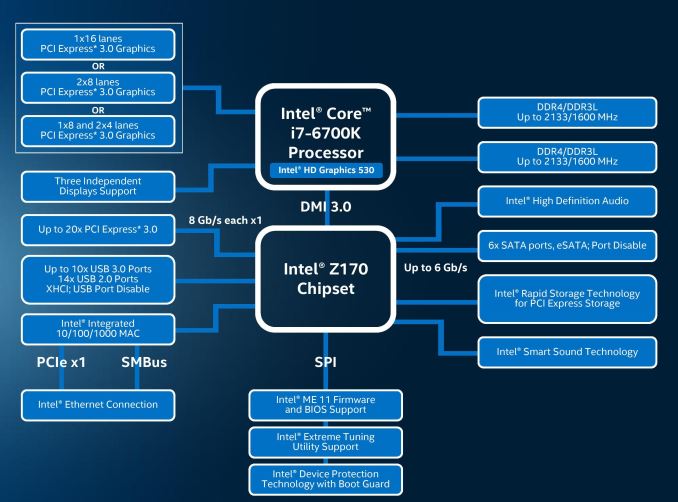
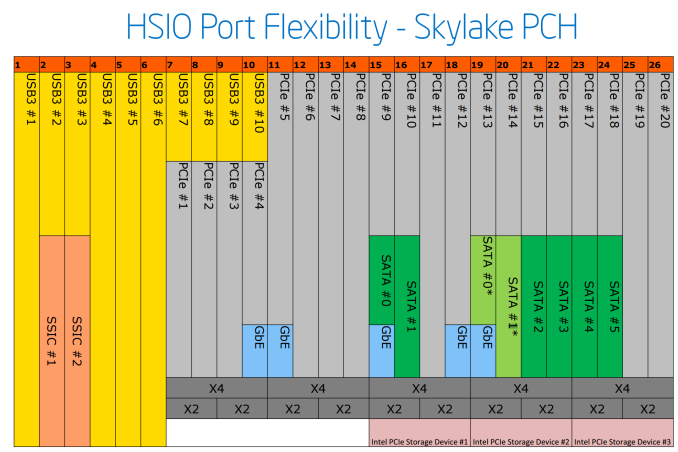
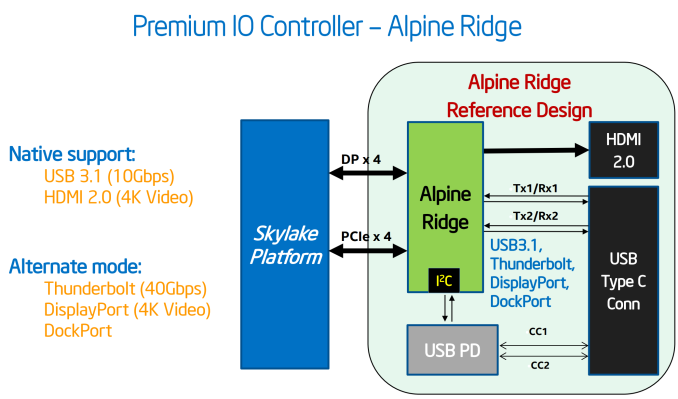
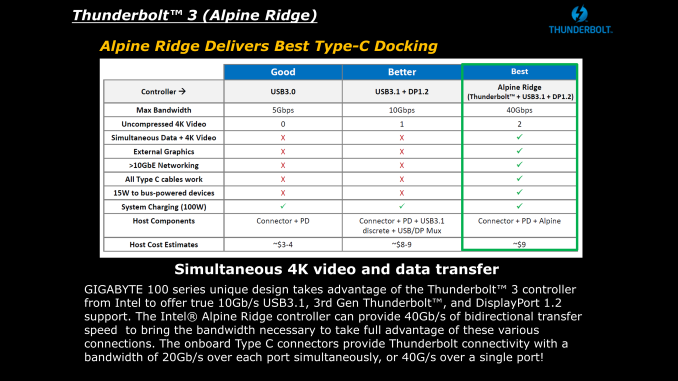
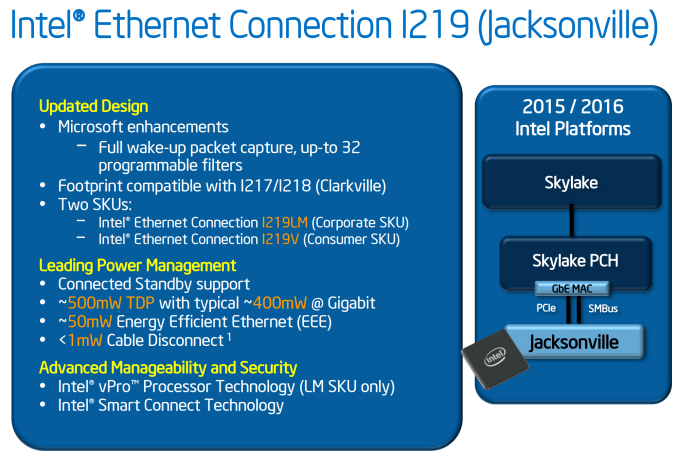
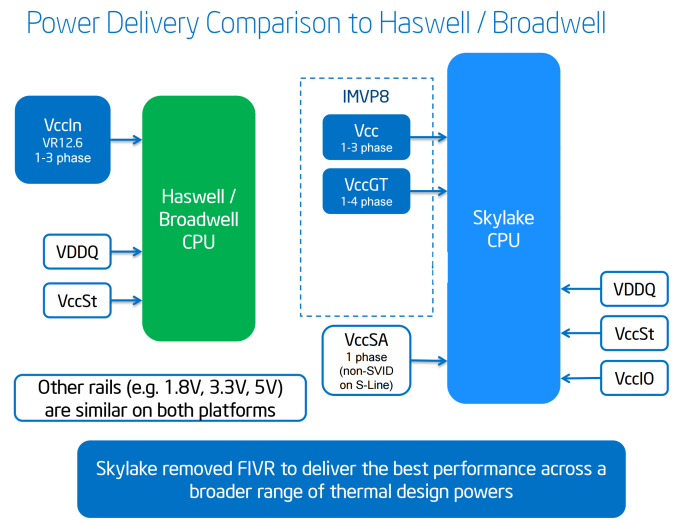
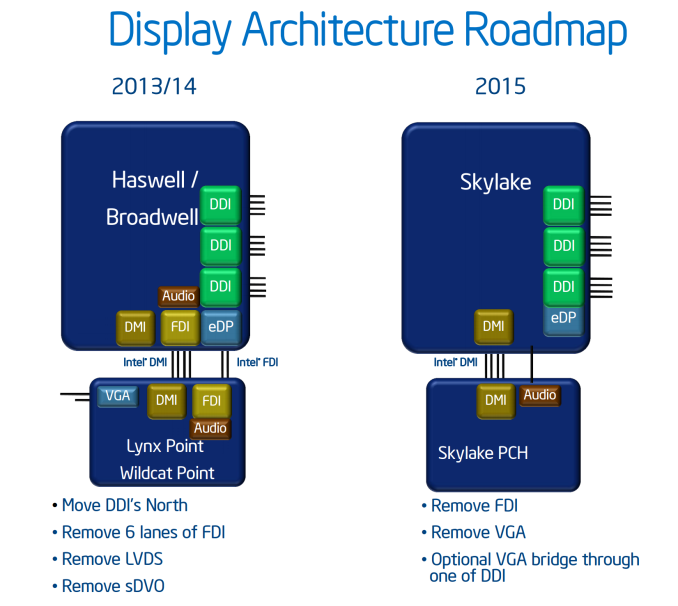
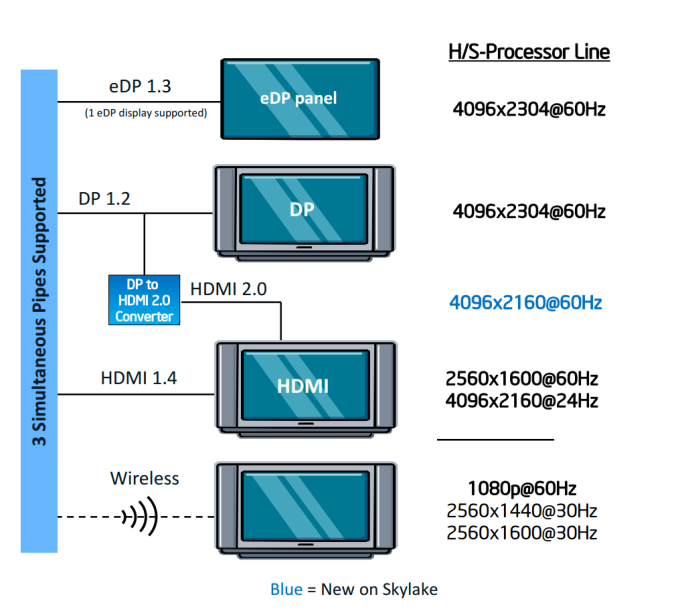
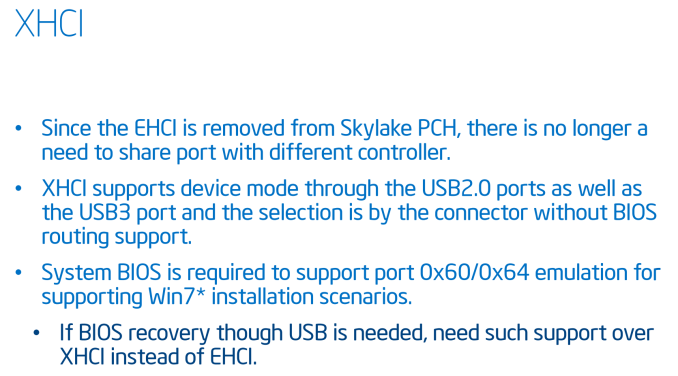
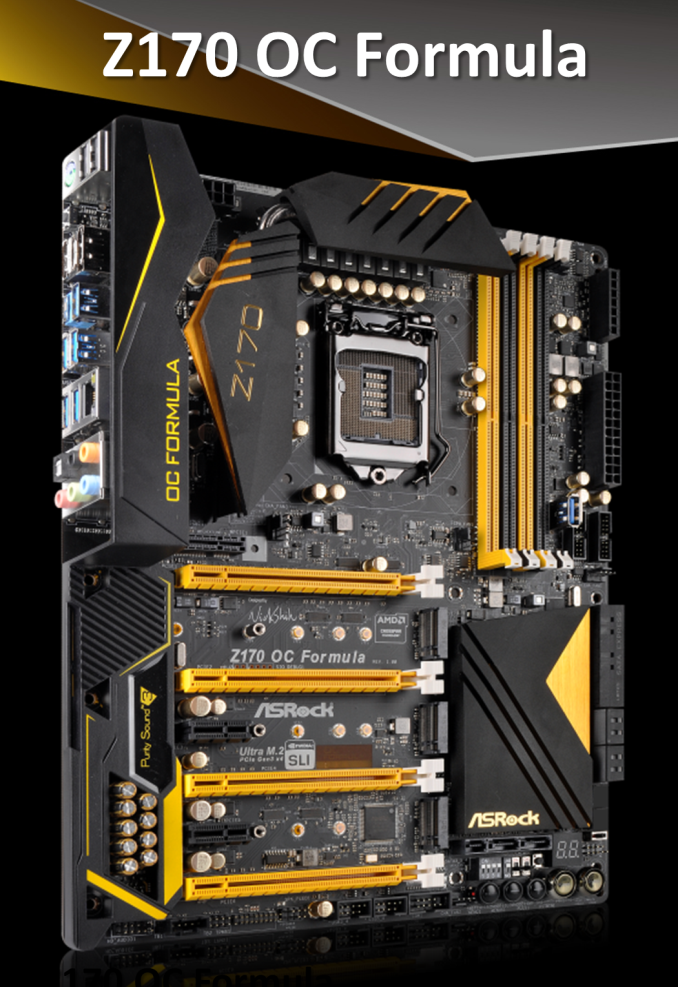
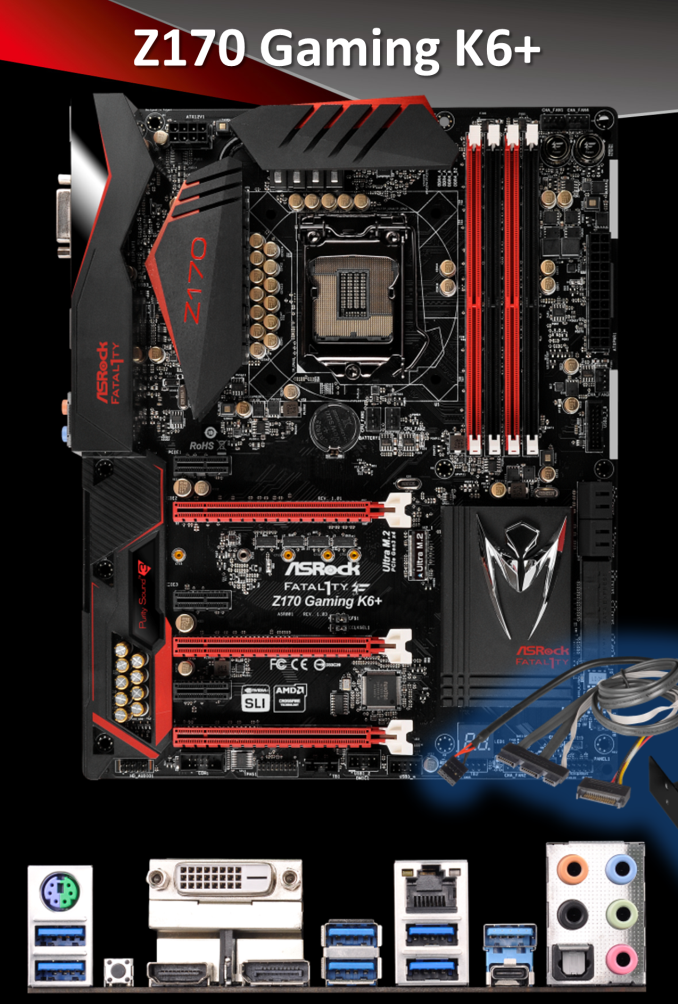
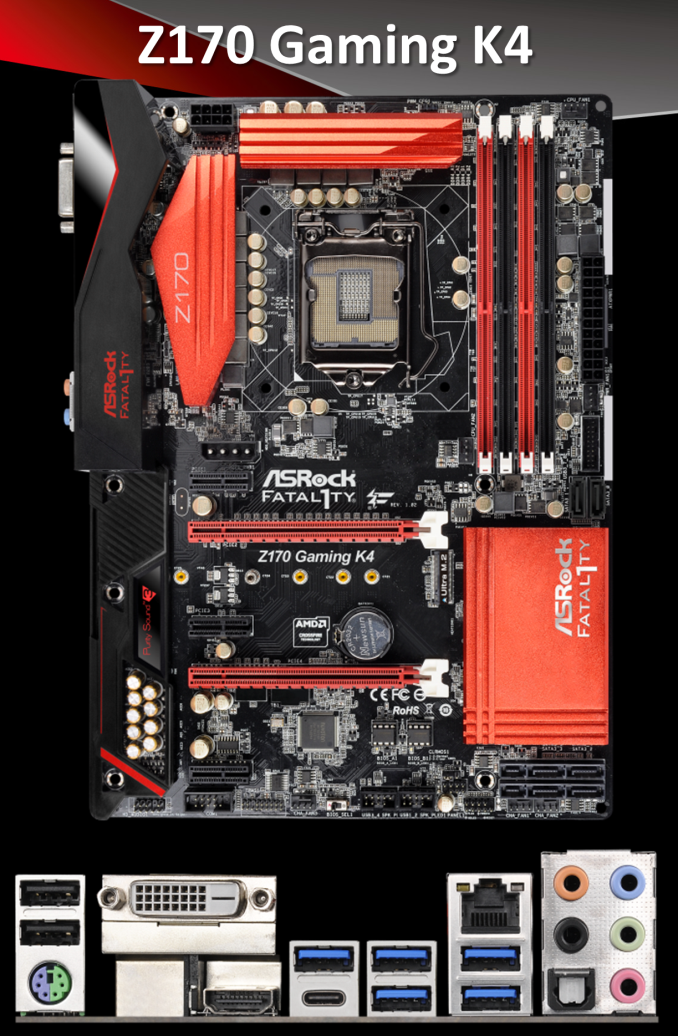
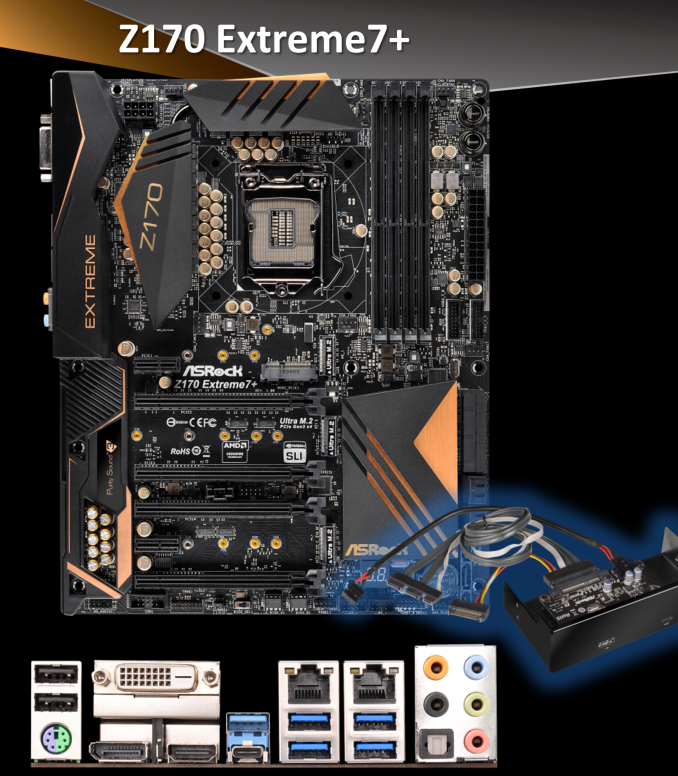
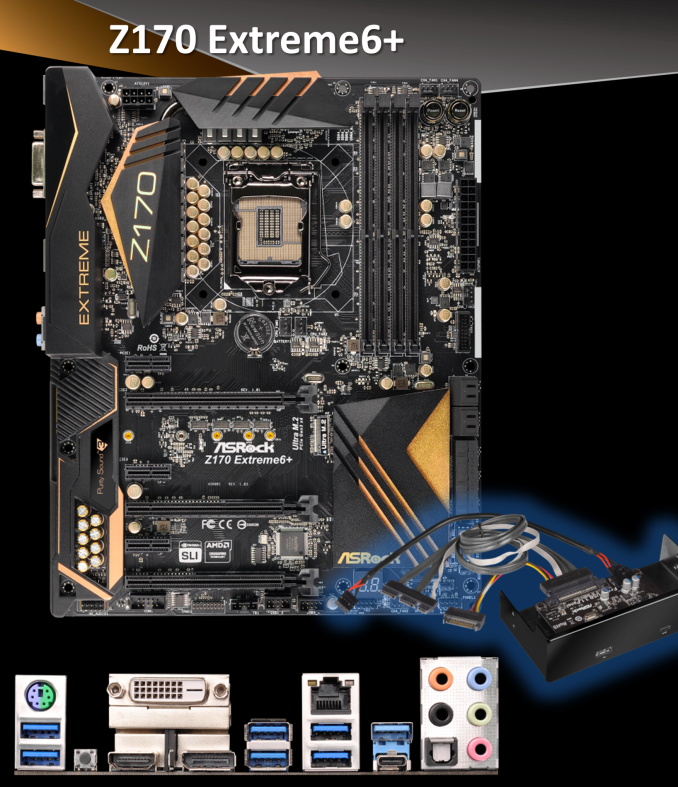
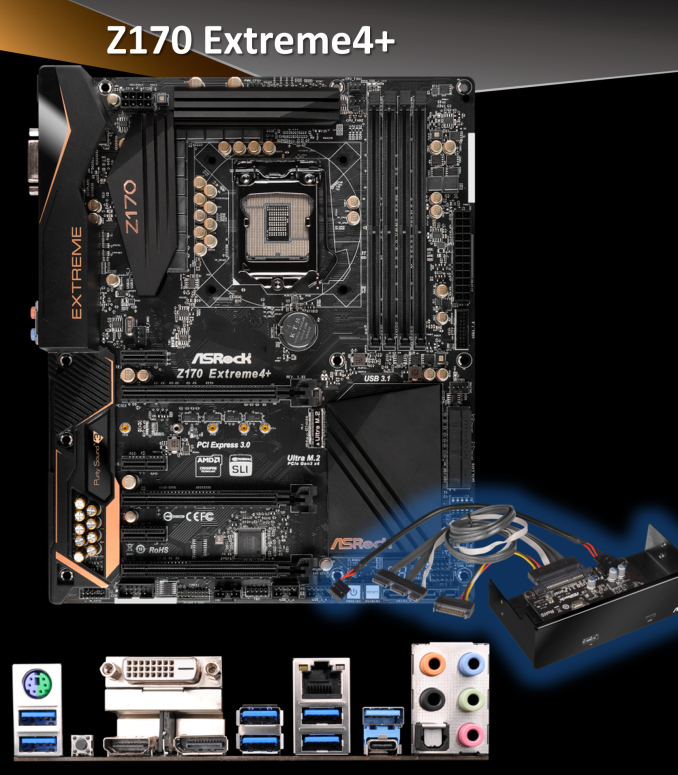
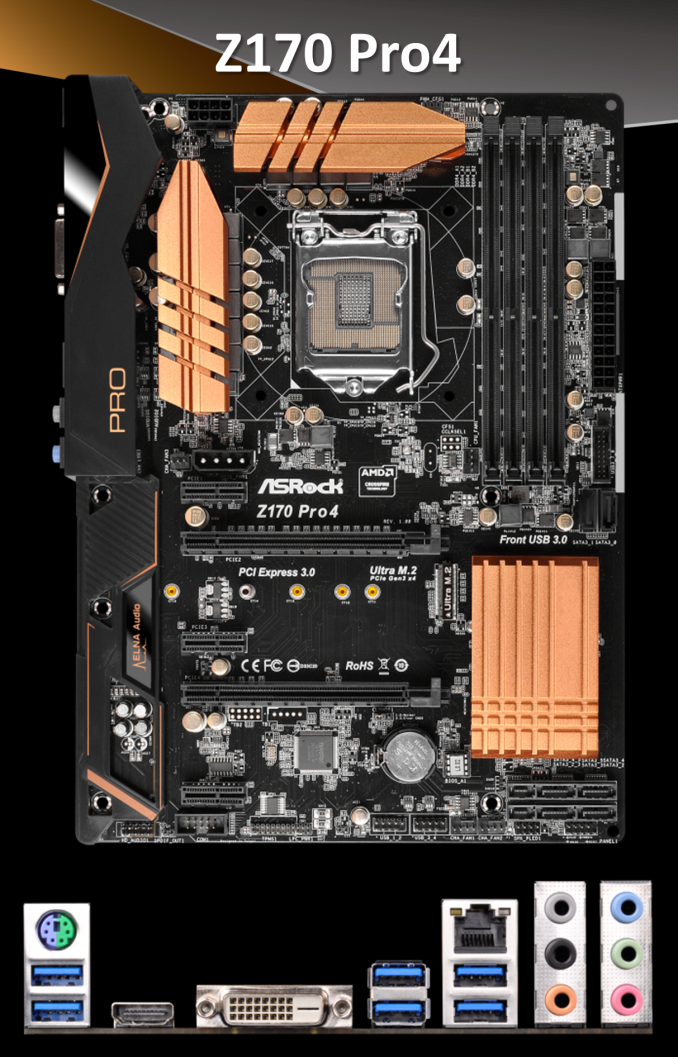
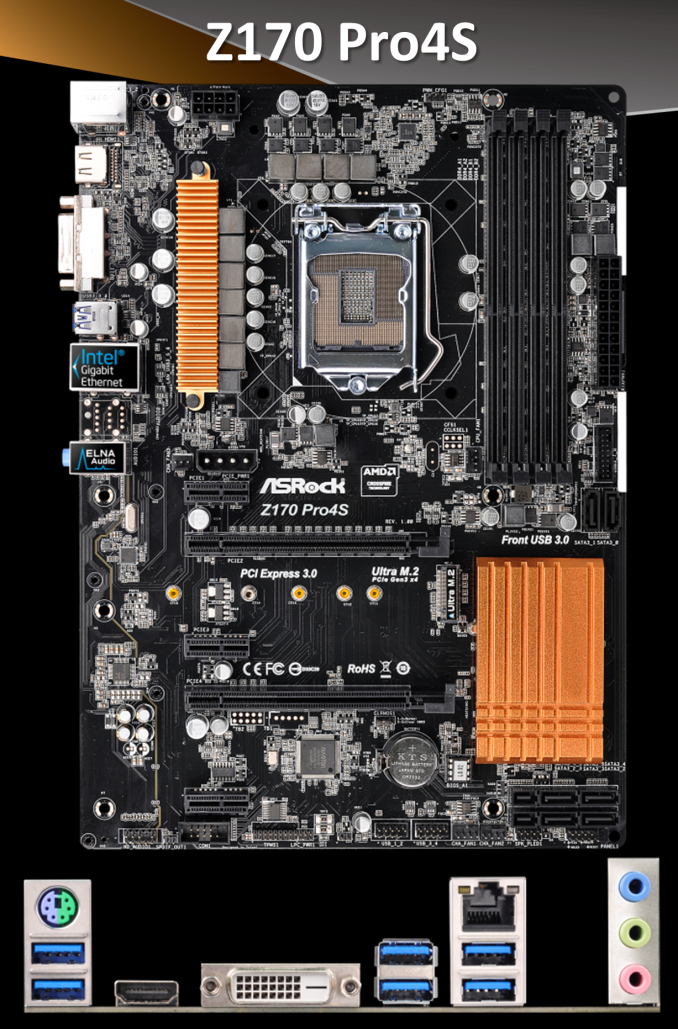
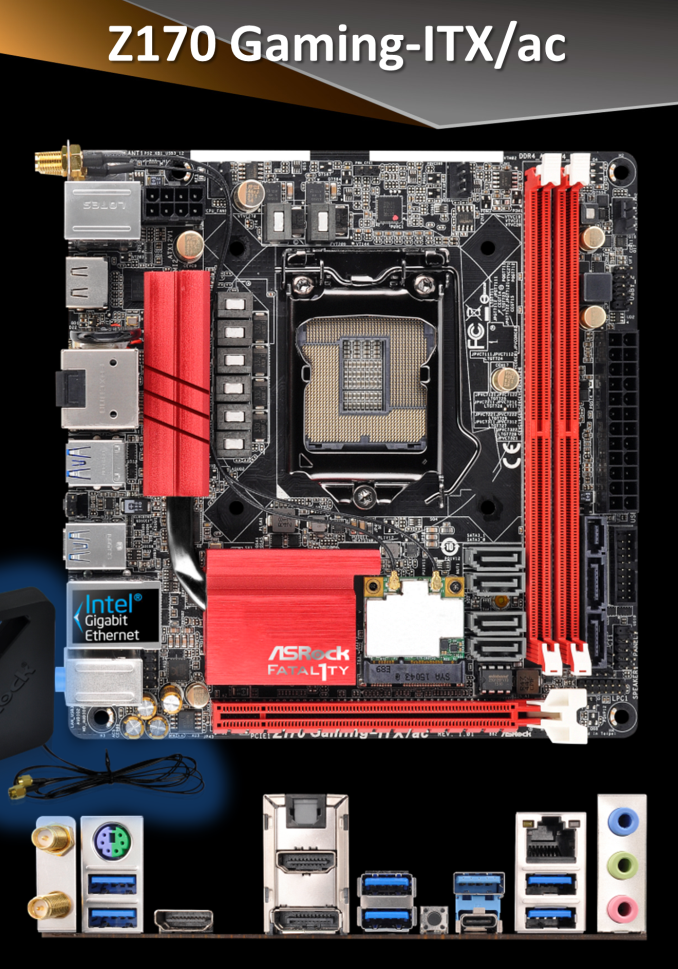
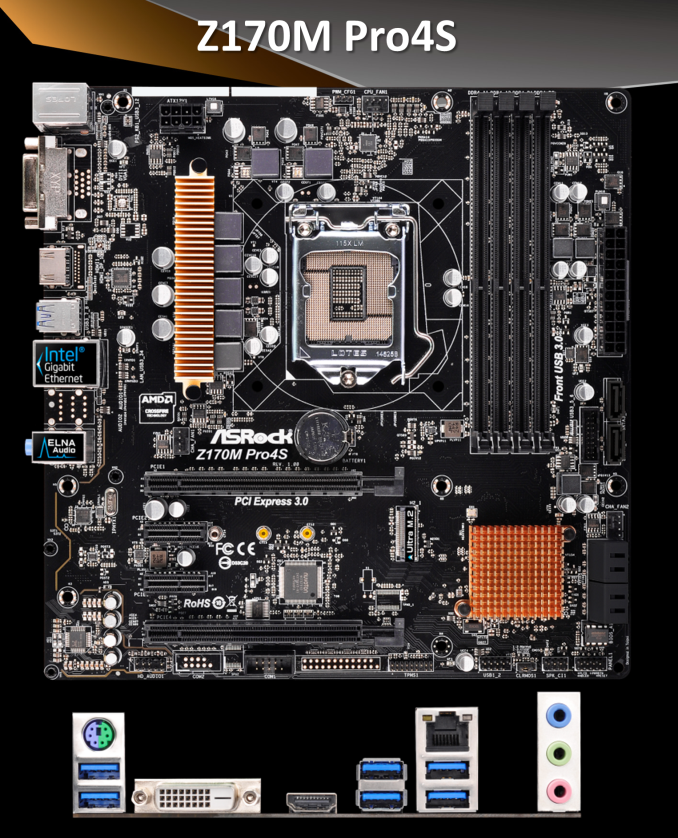
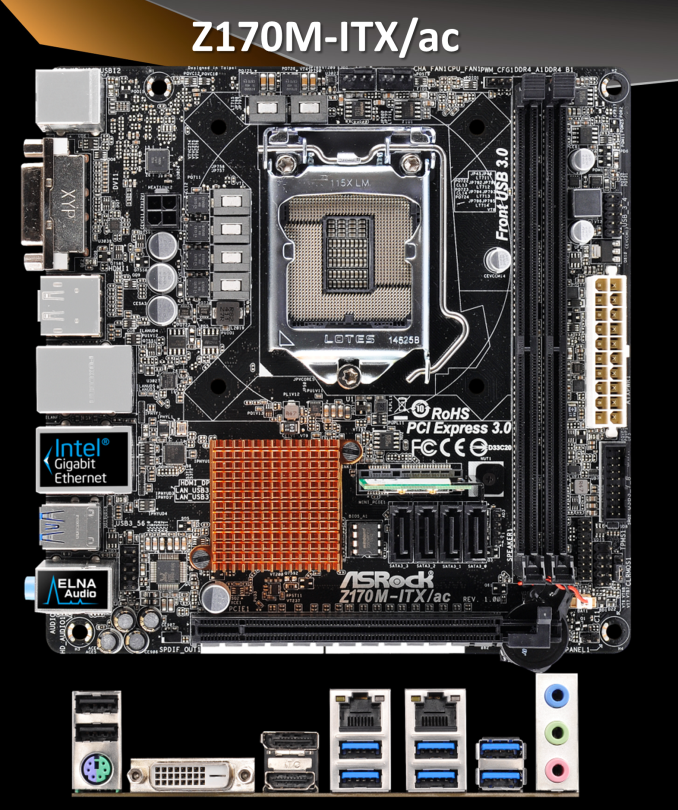
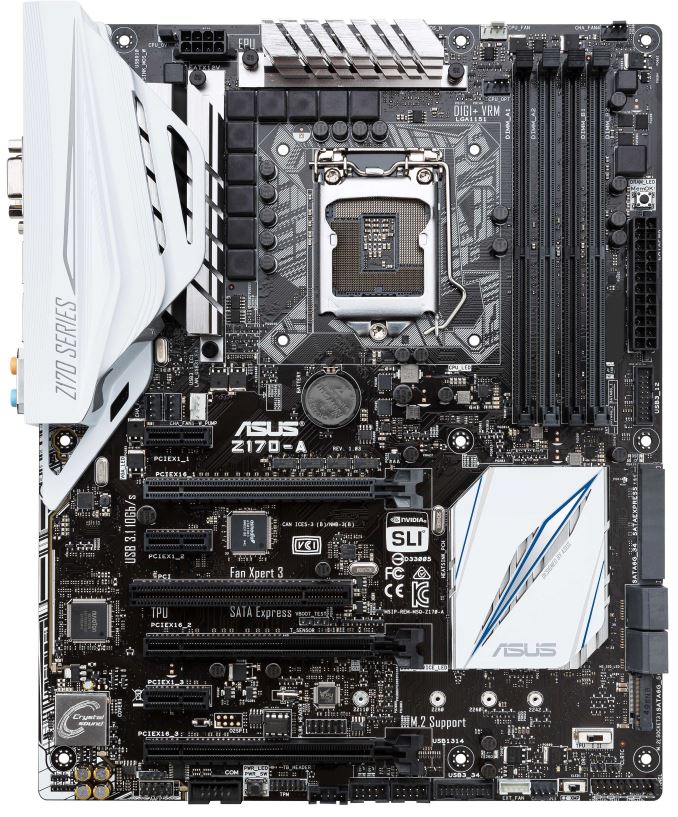







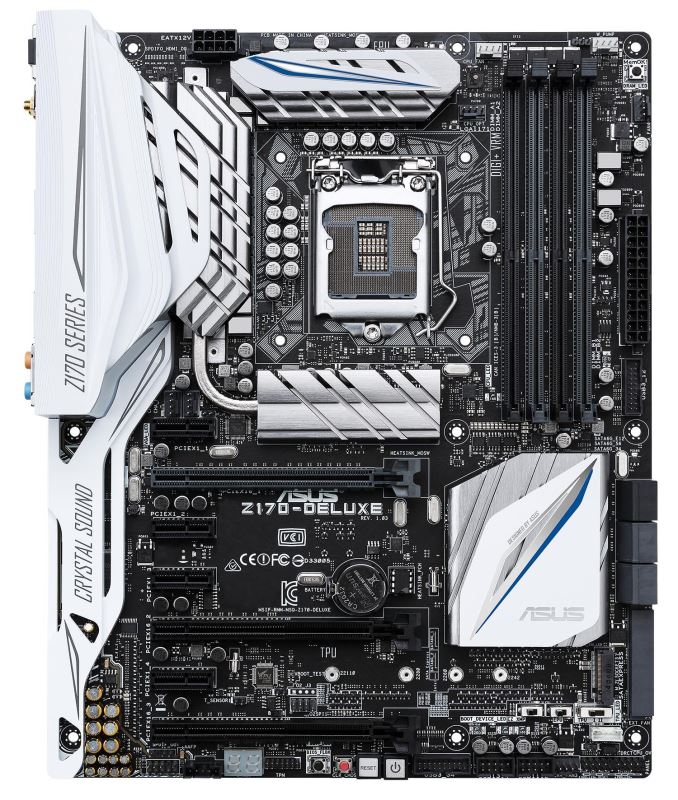







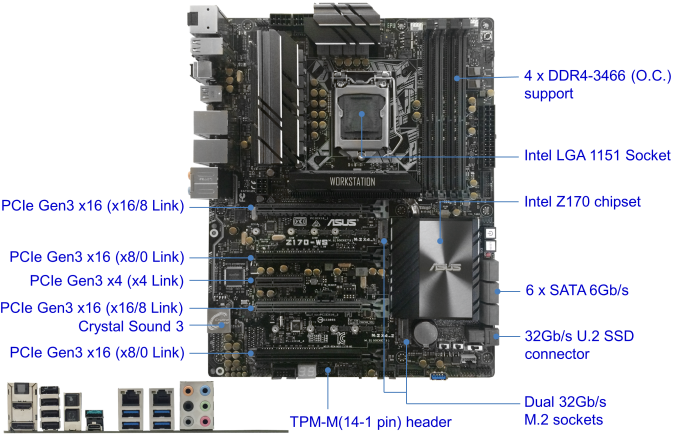
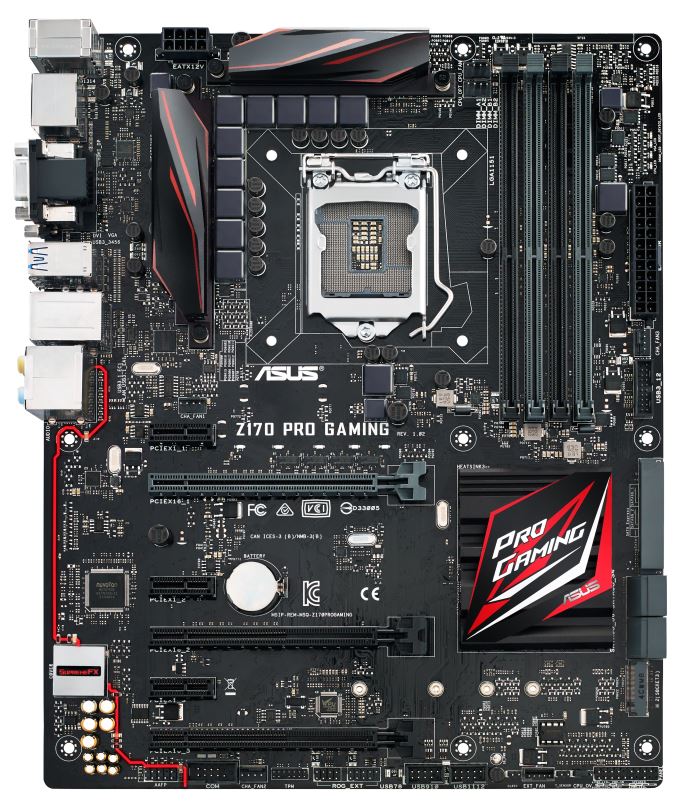







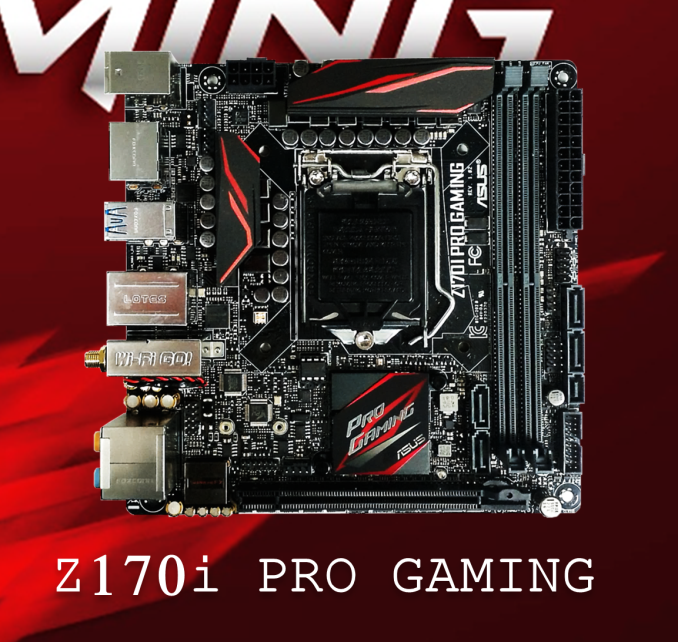
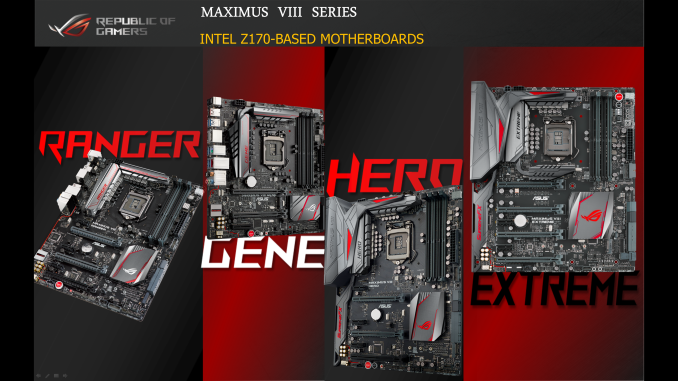
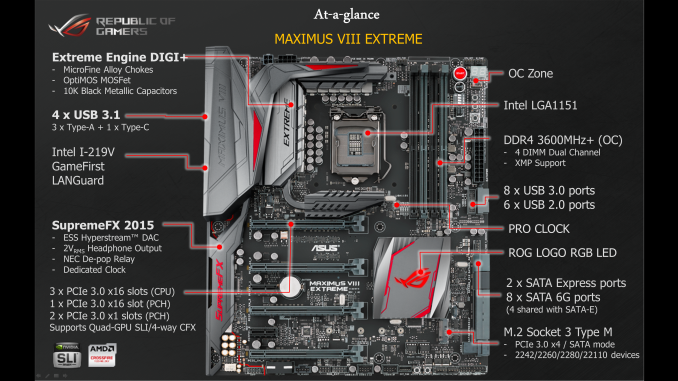
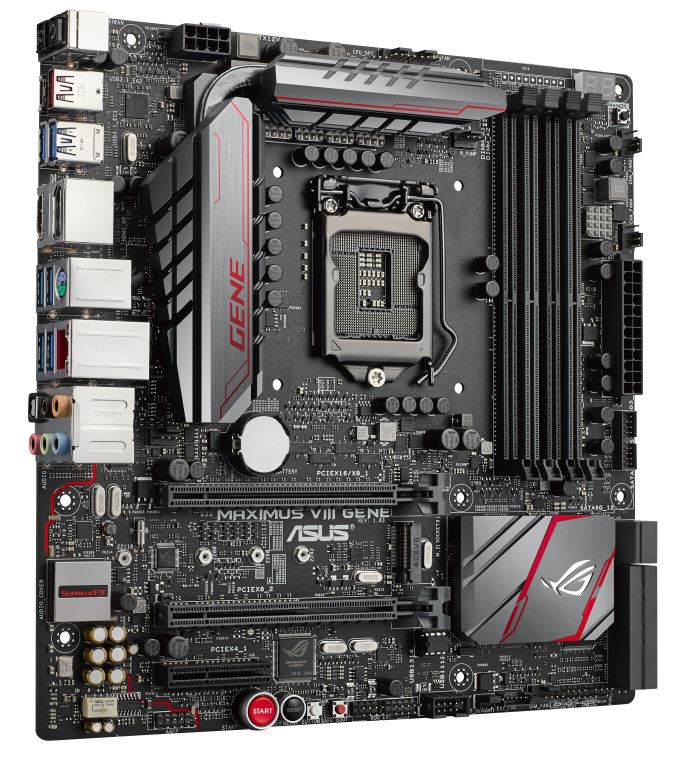







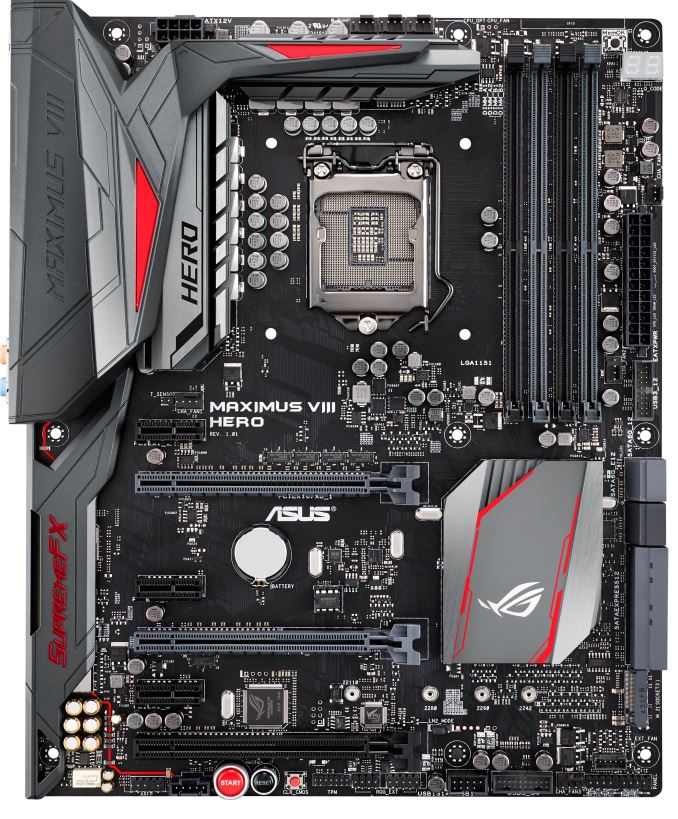

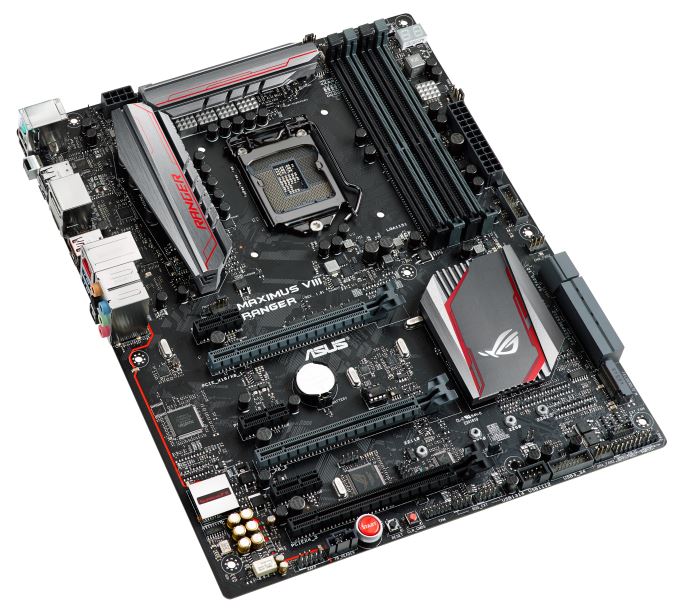
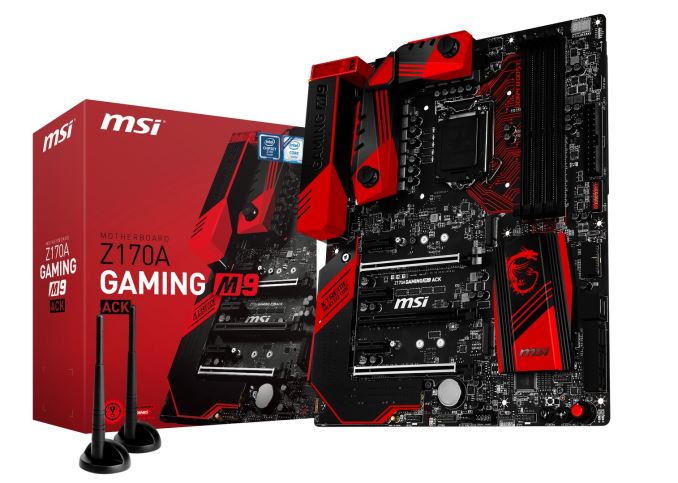







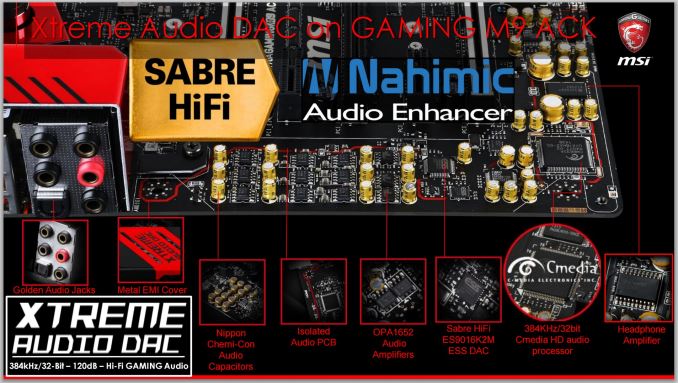
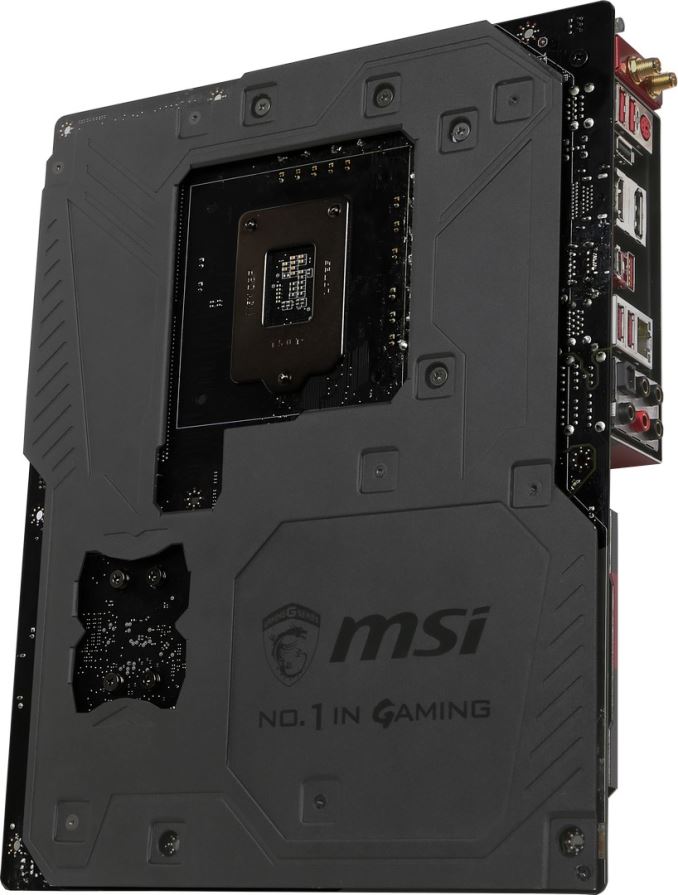
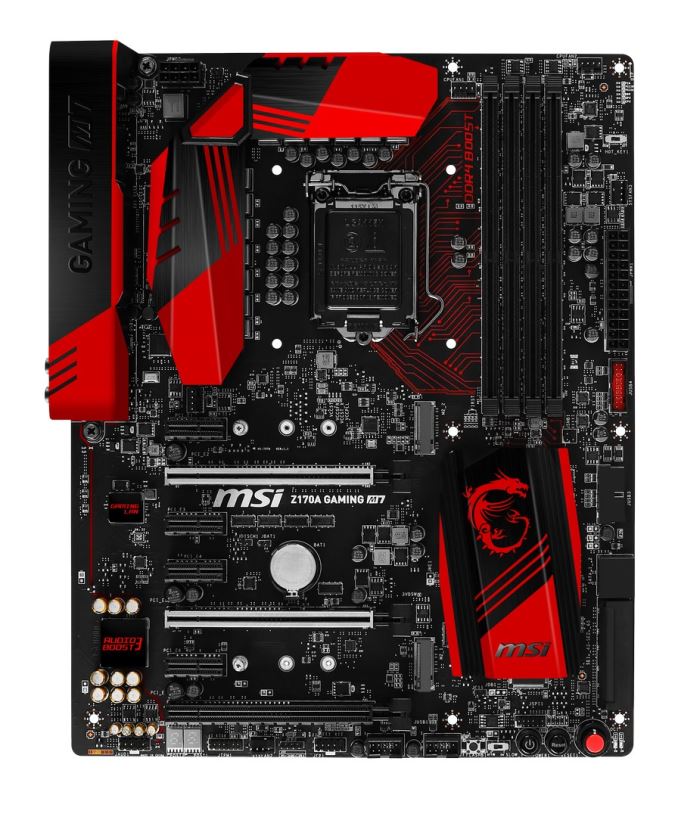







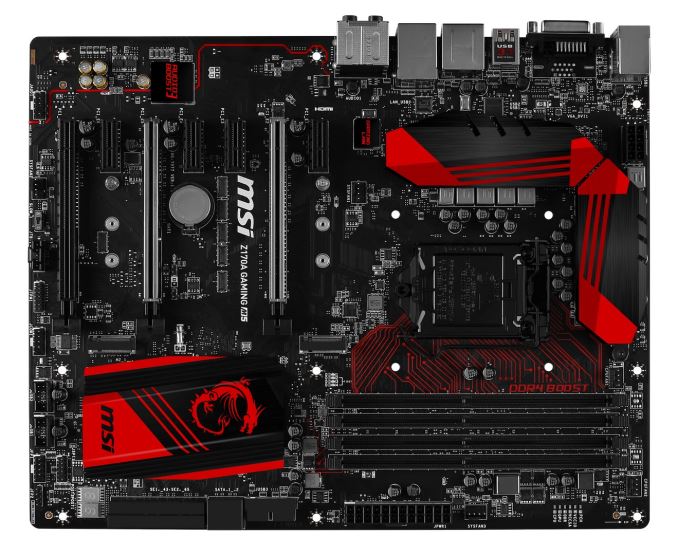
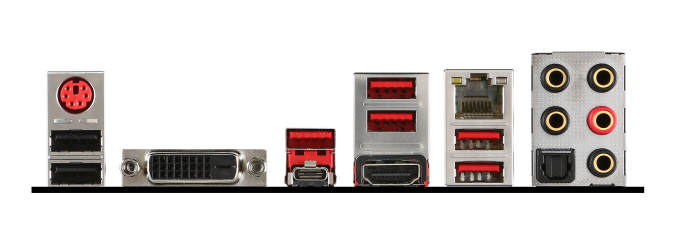






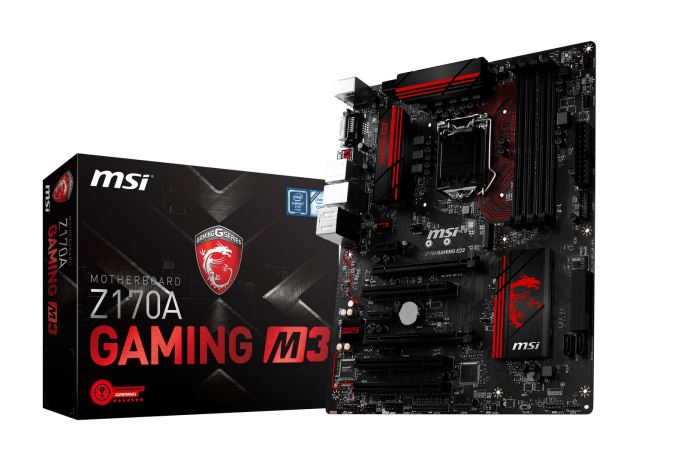







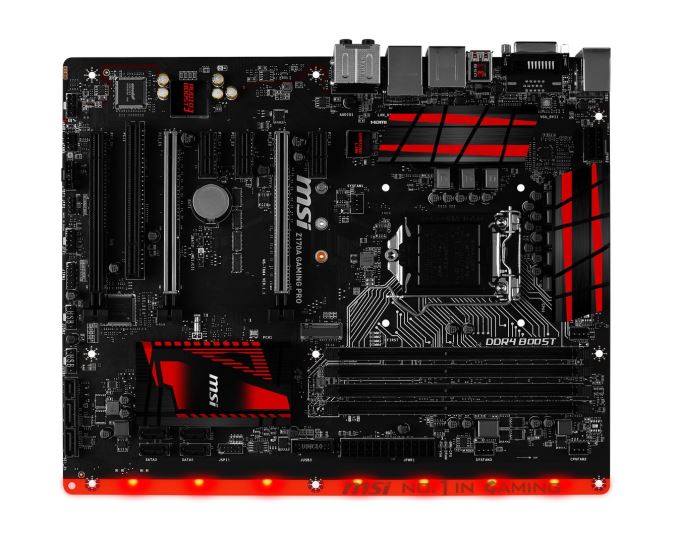







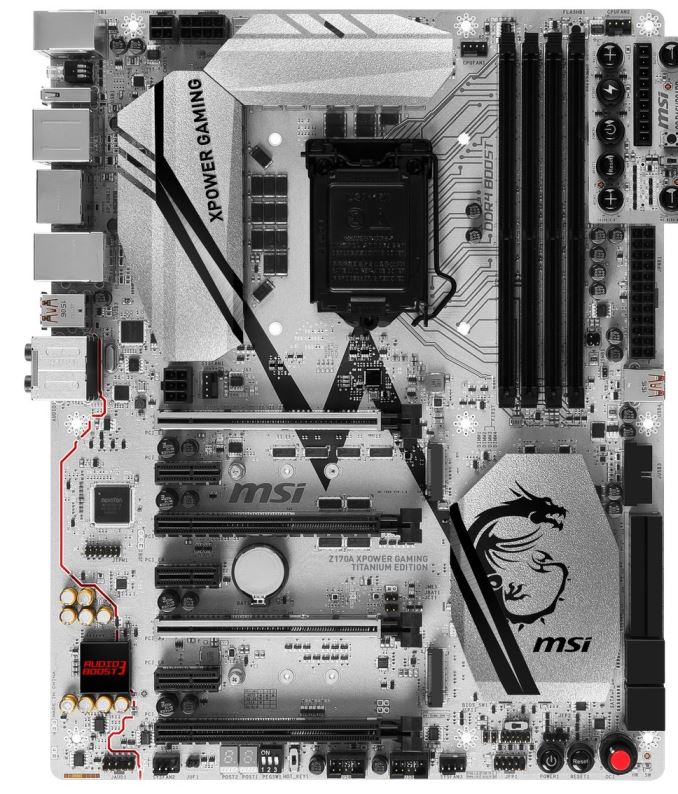

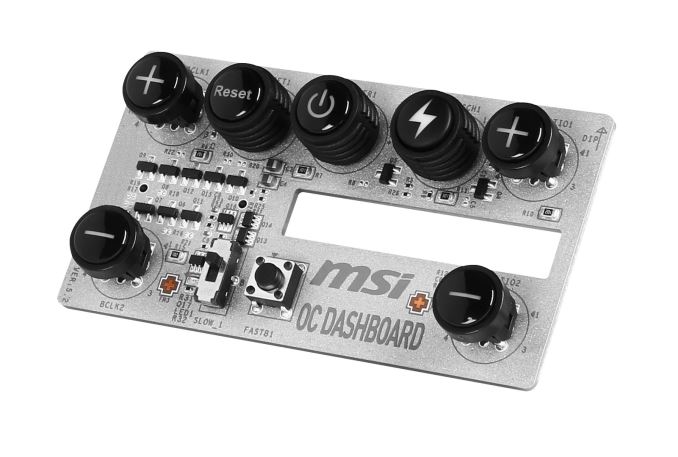






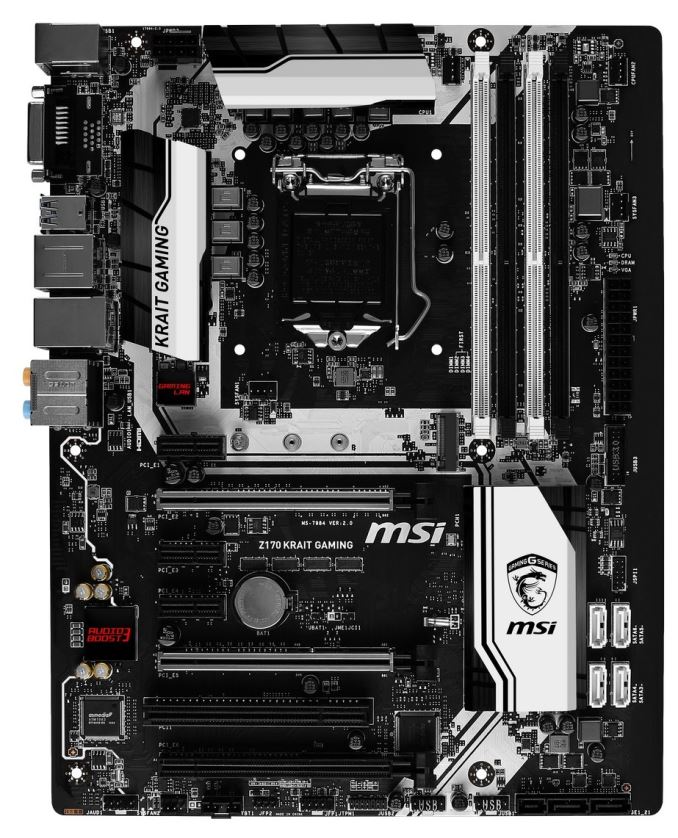







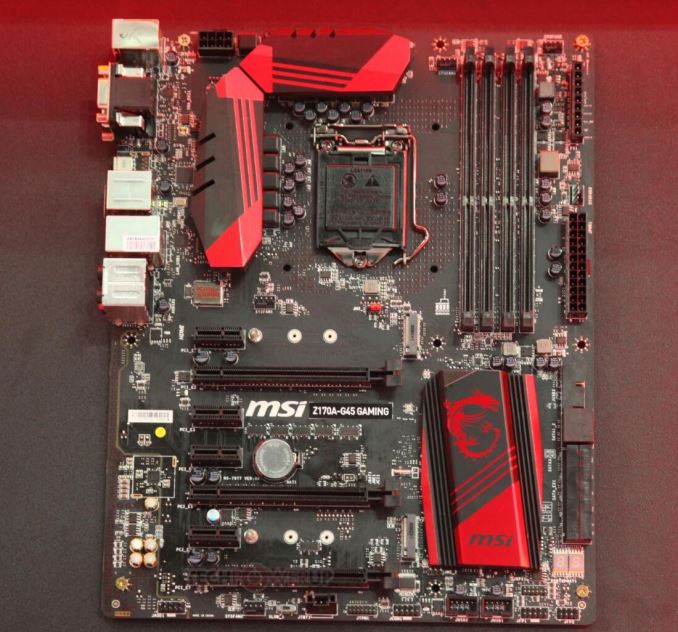
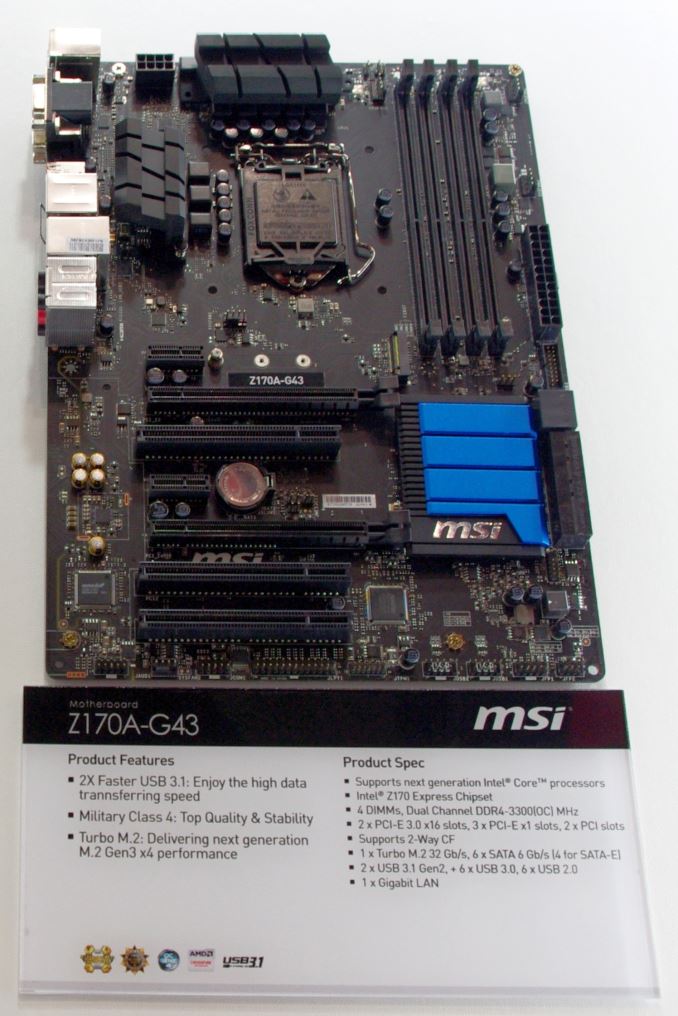
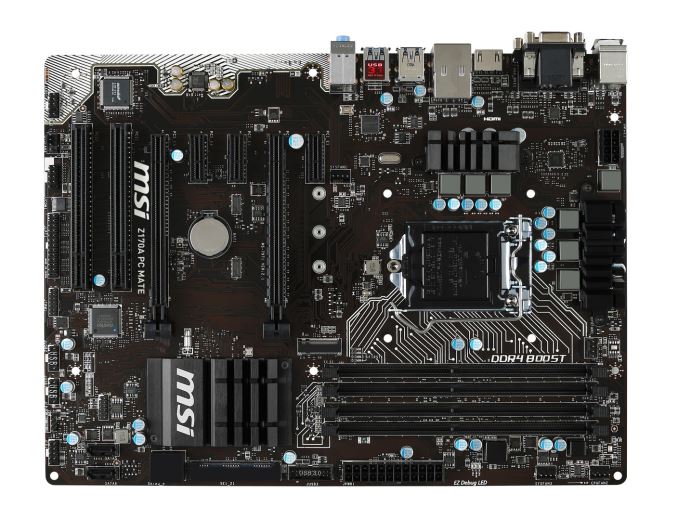






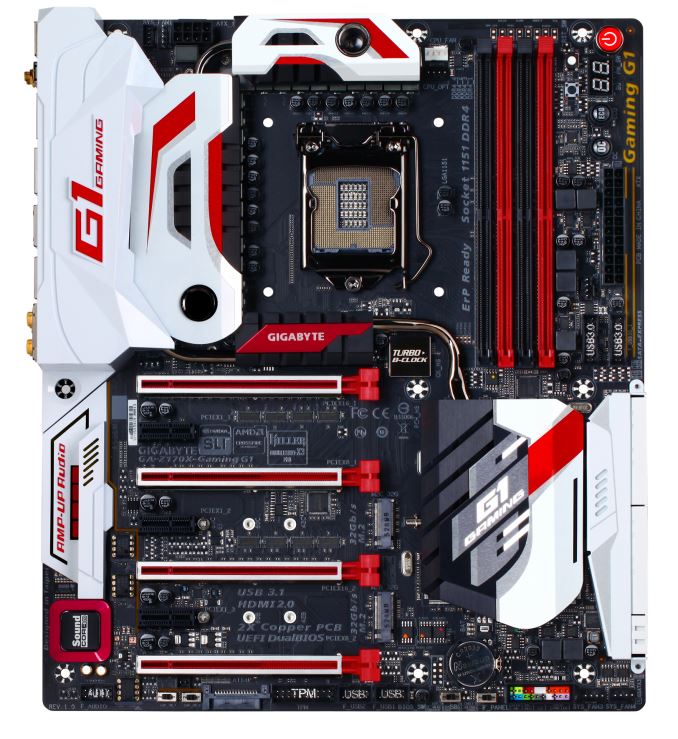
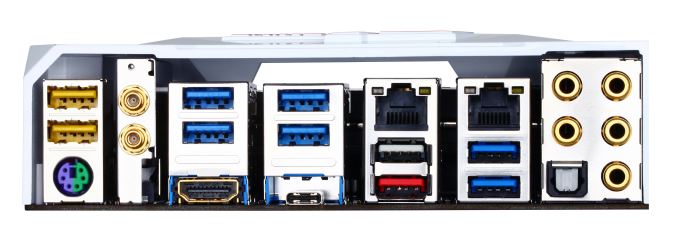




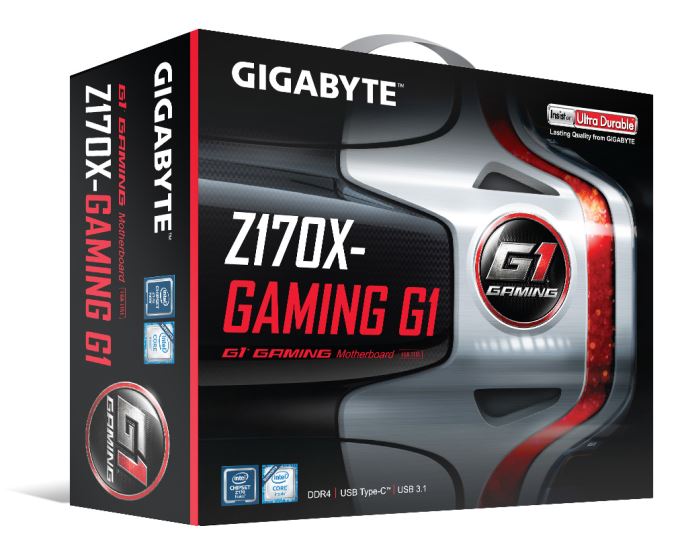
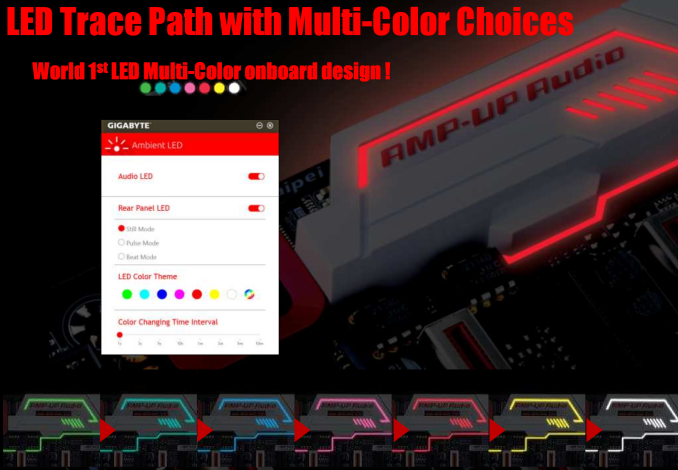
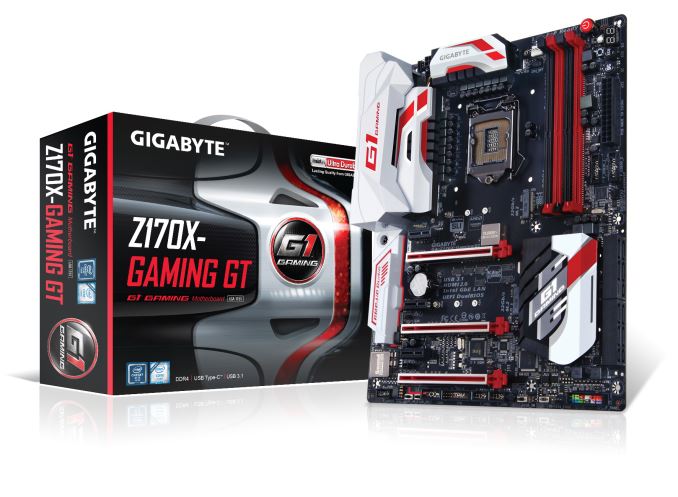
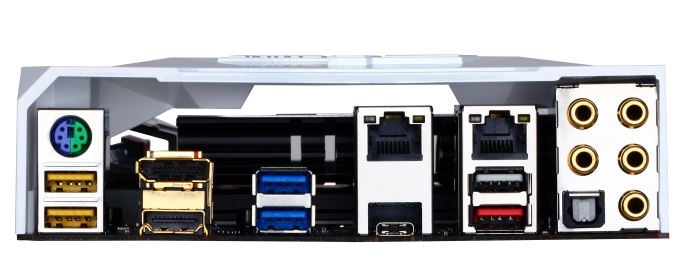





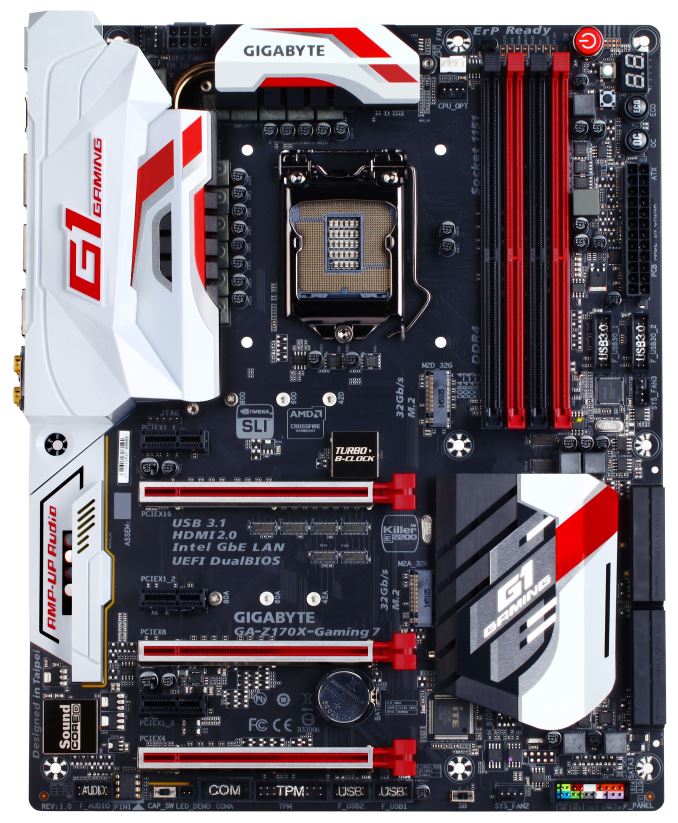
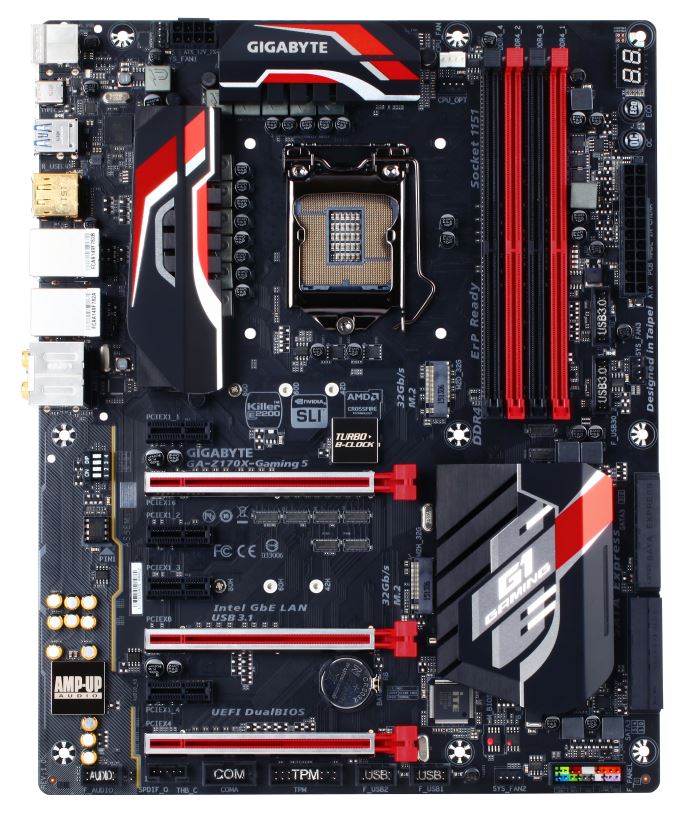






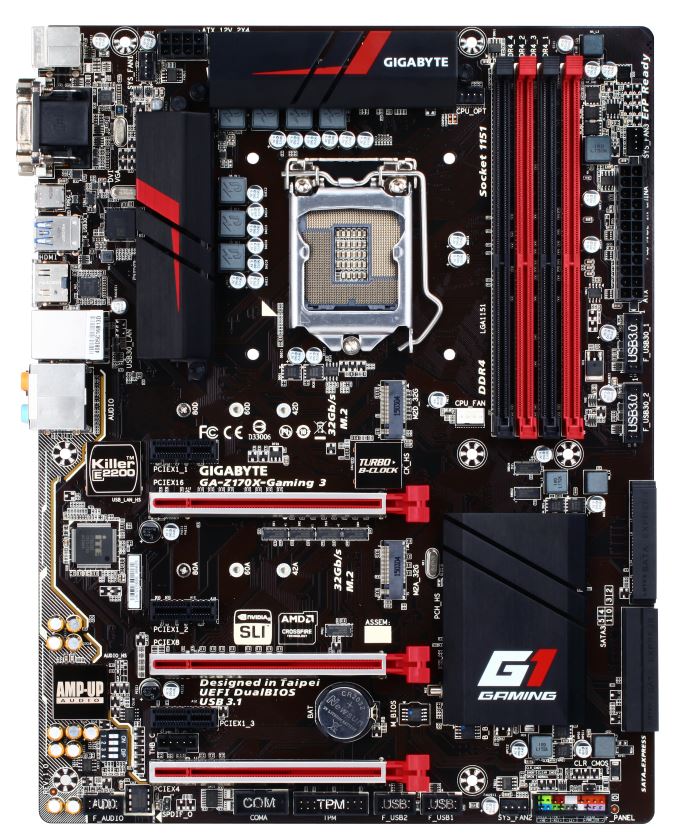






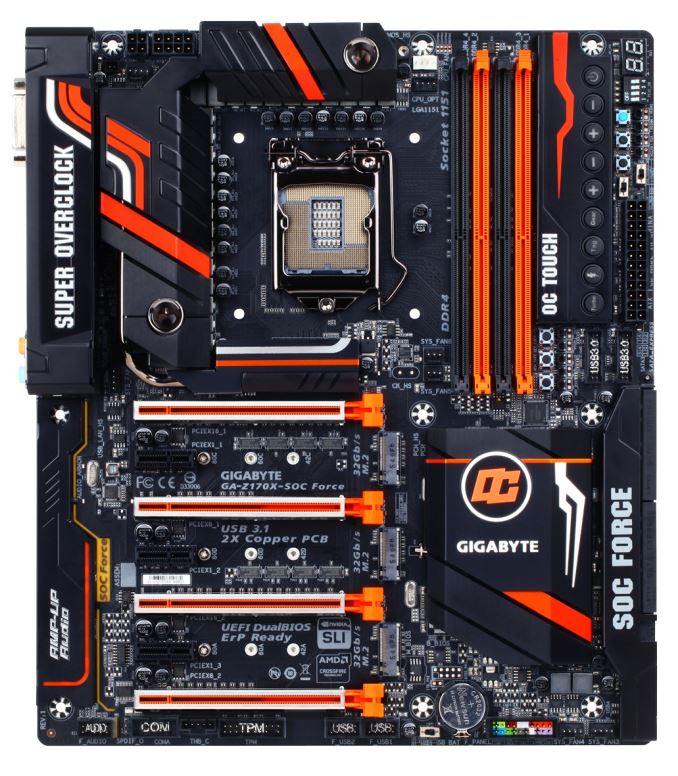






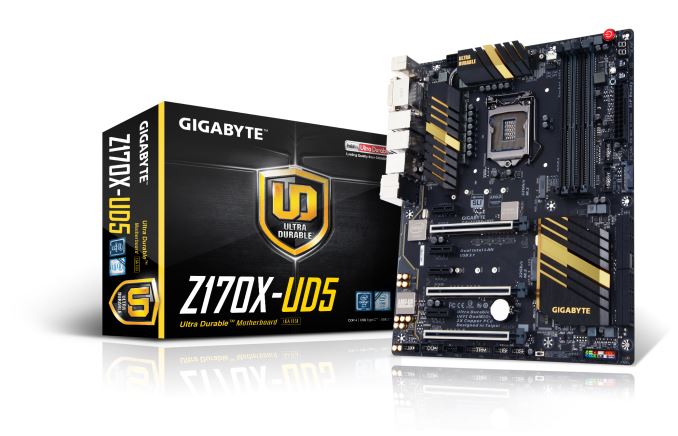






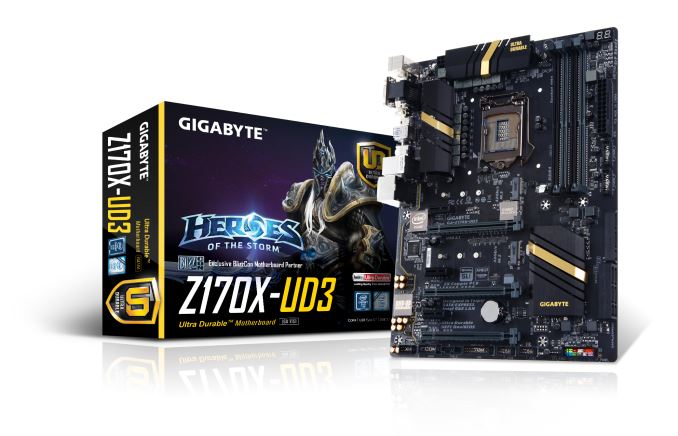







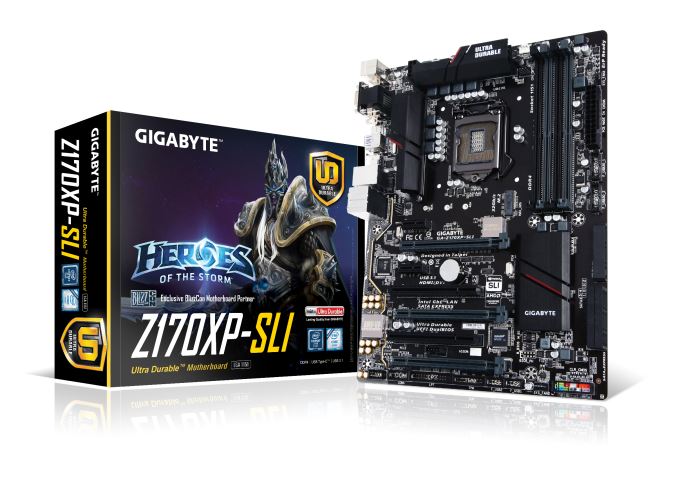
_thumb.jpg)






_thumb.jpg)
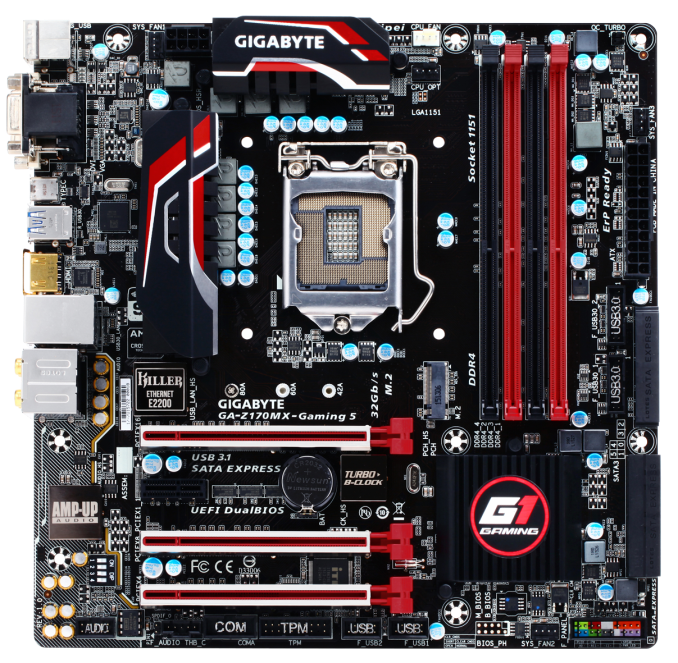
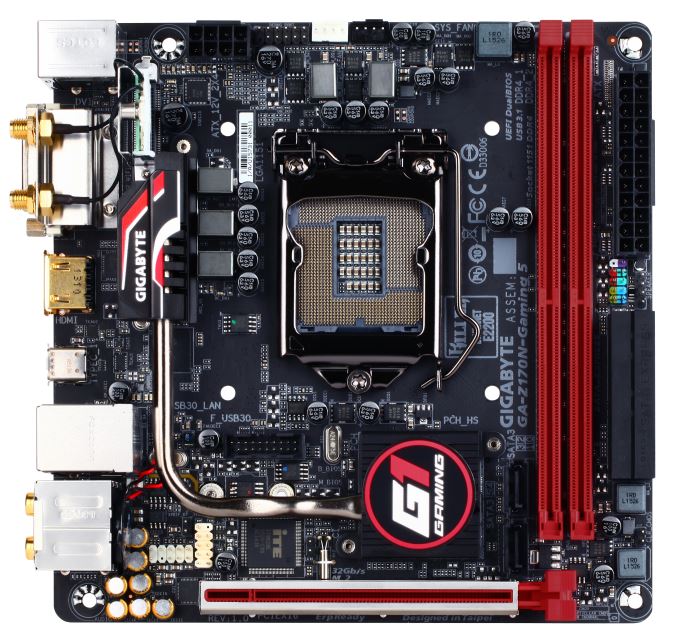
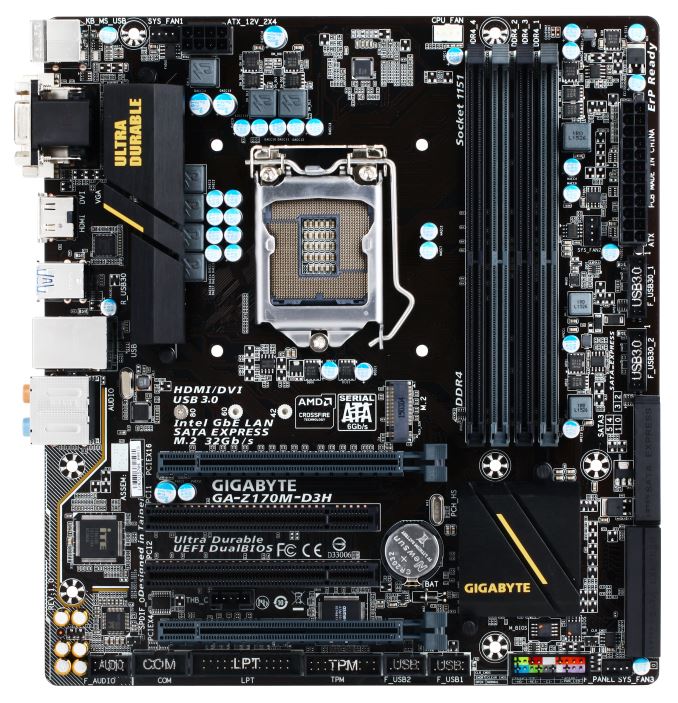
_thumb.jpg)
box_thumb.jpg)



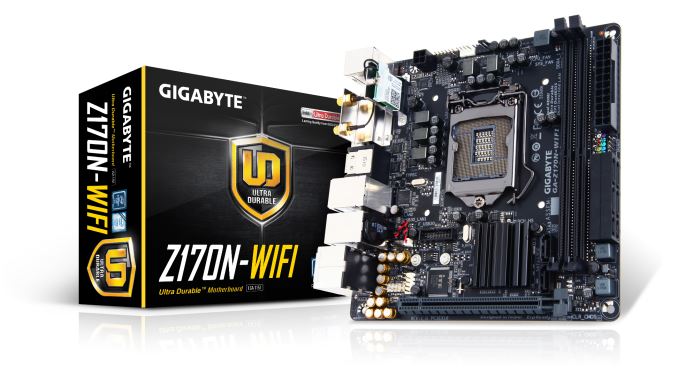











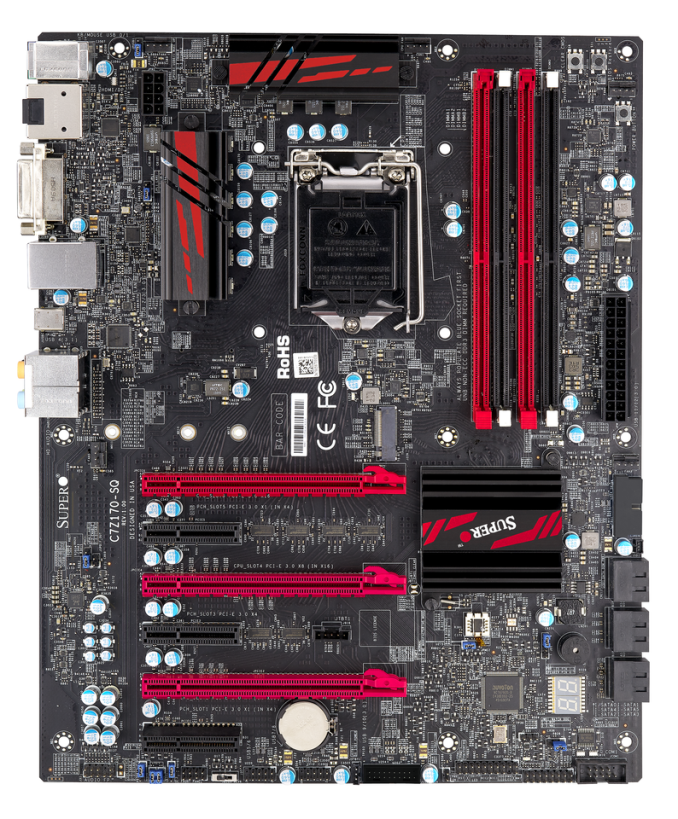
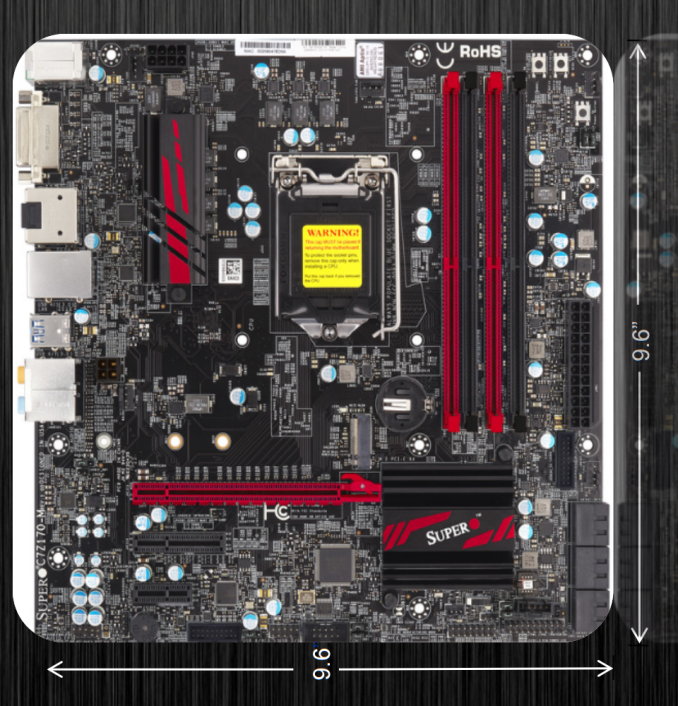
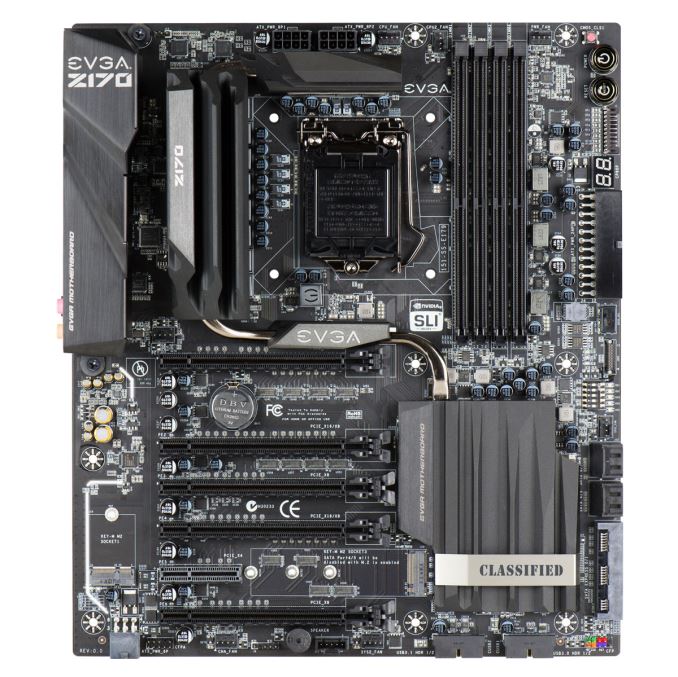
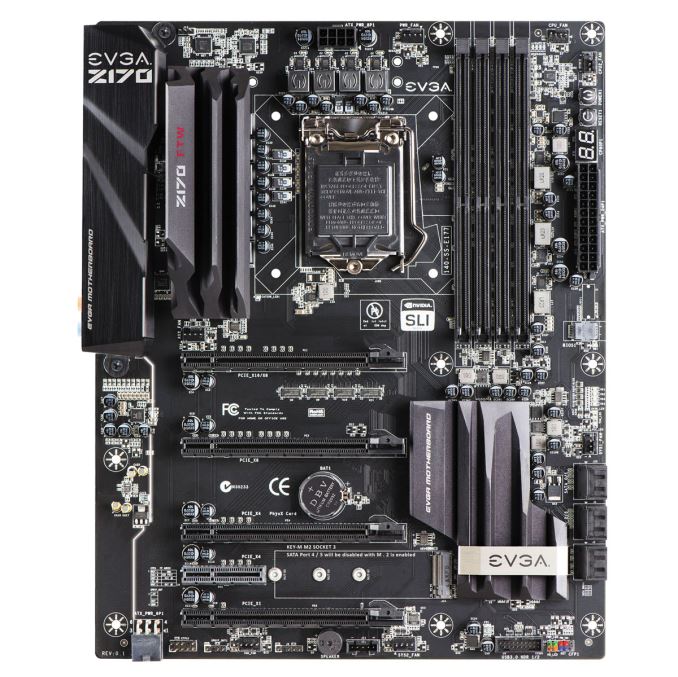
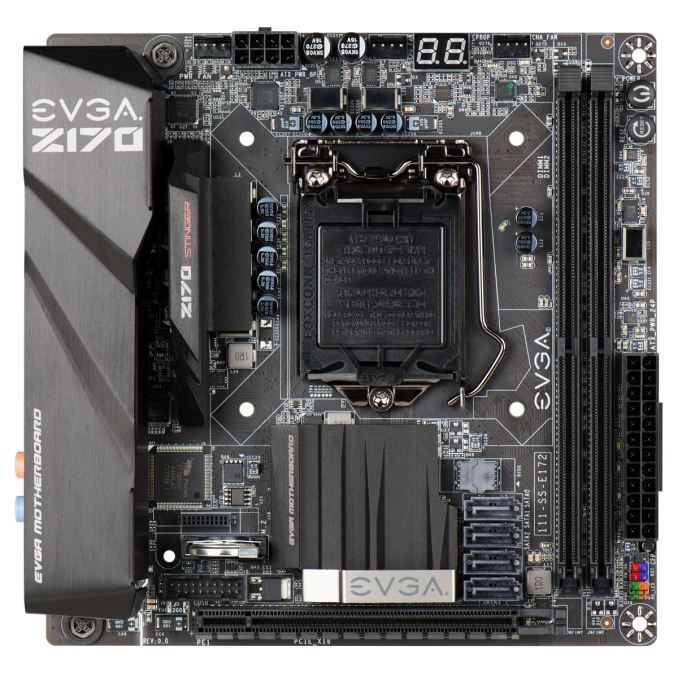
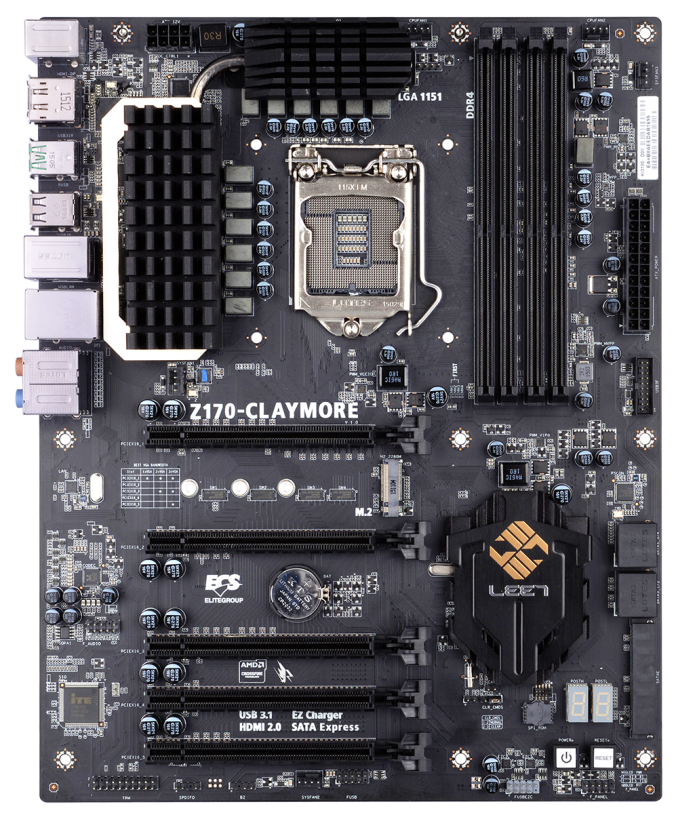

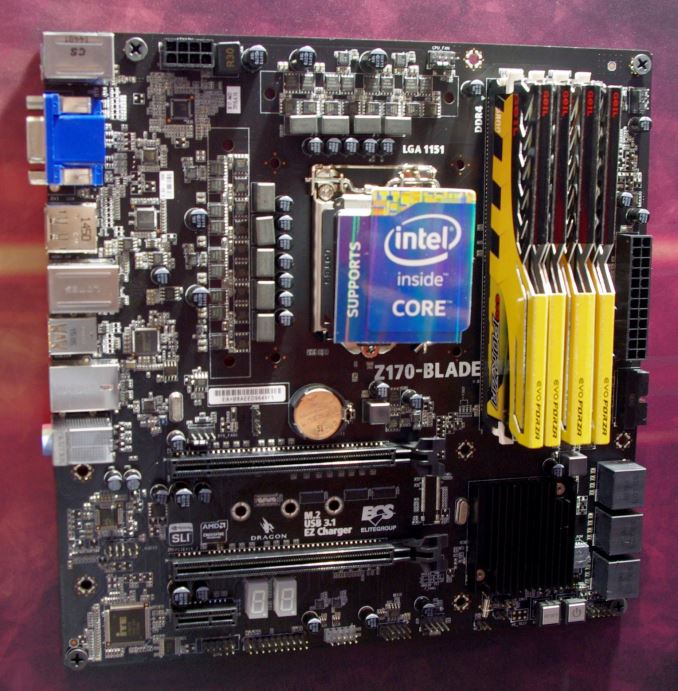
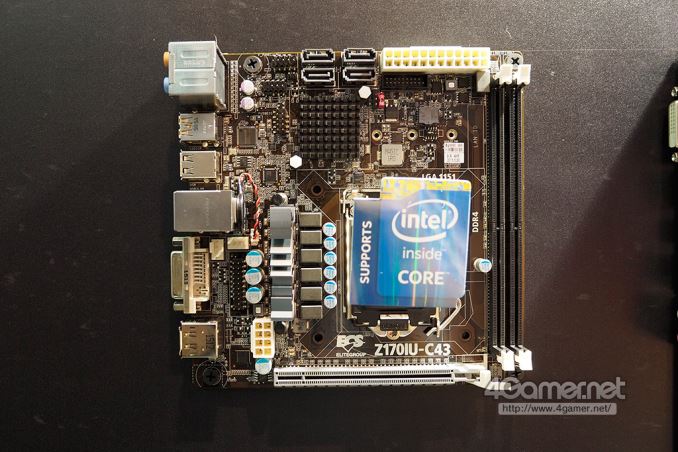
























_thumb.png)
_thumb.png)






